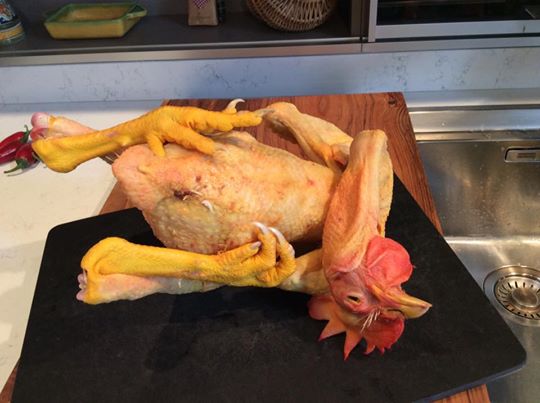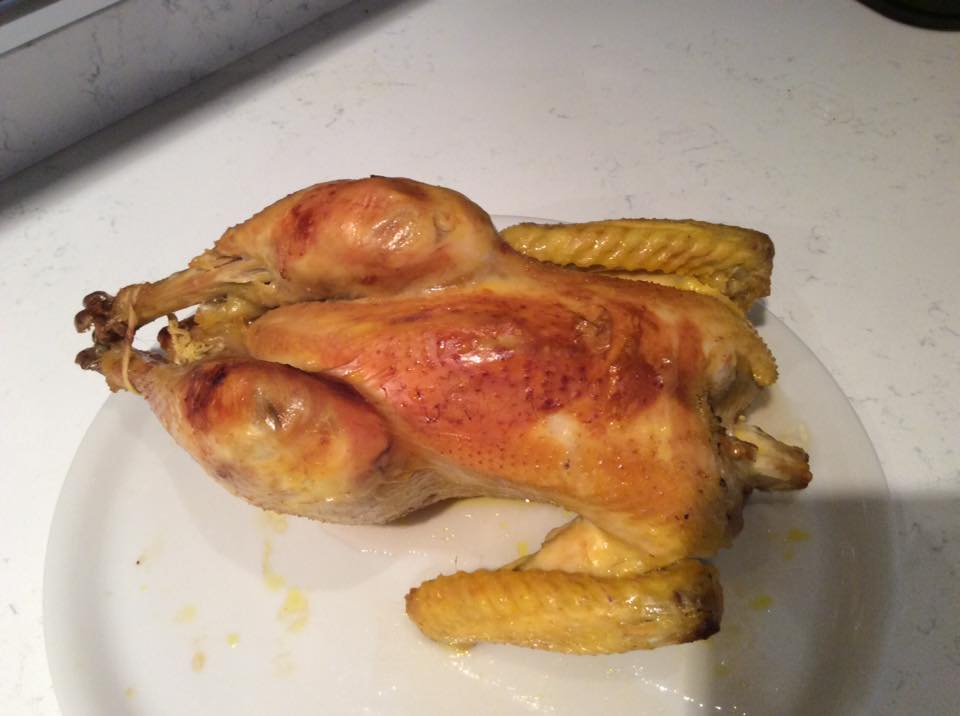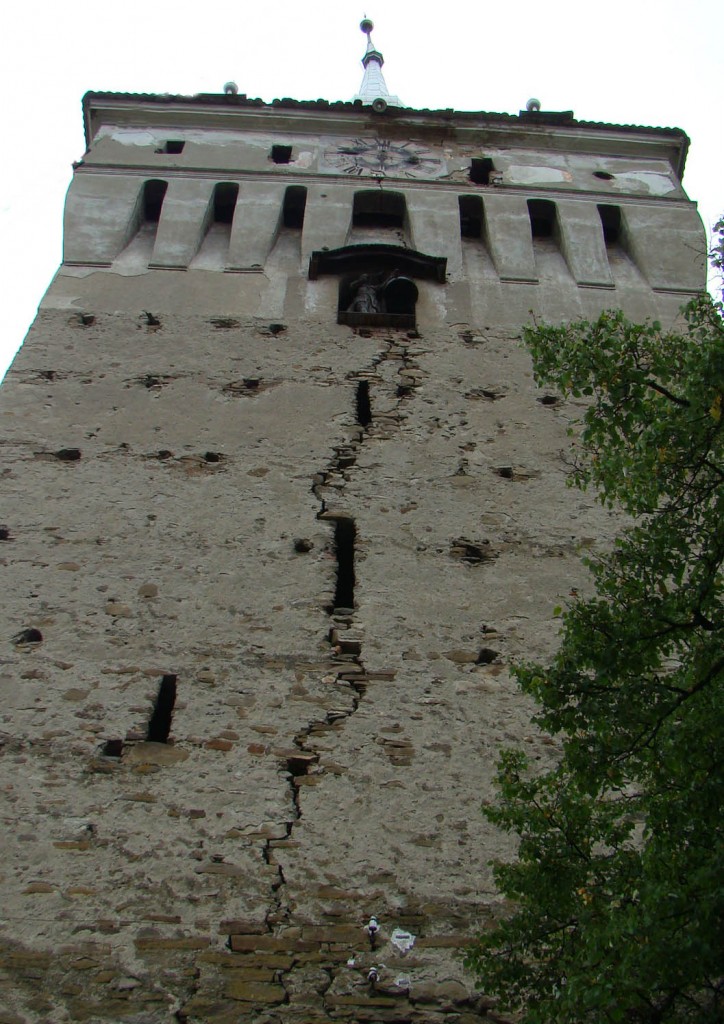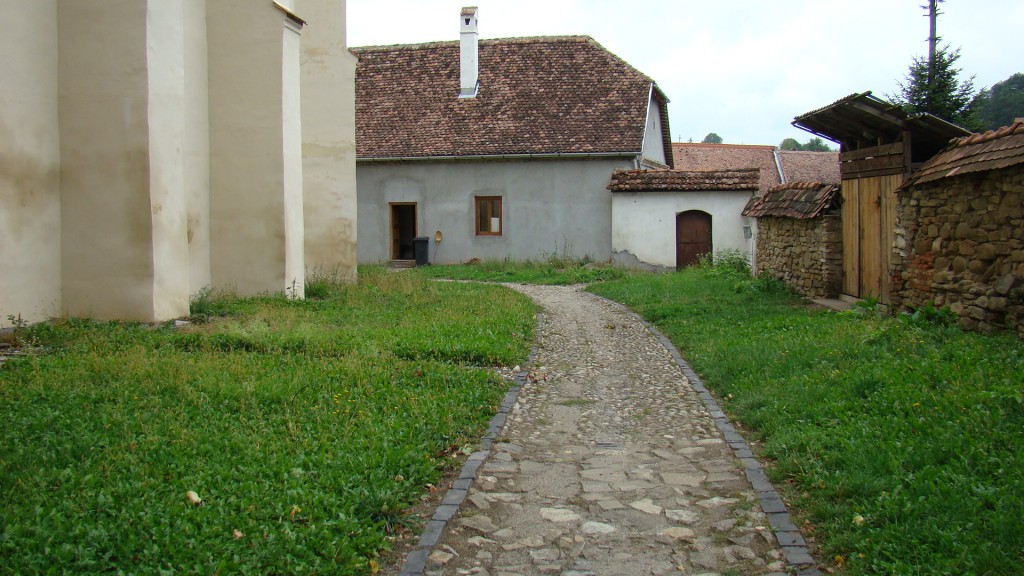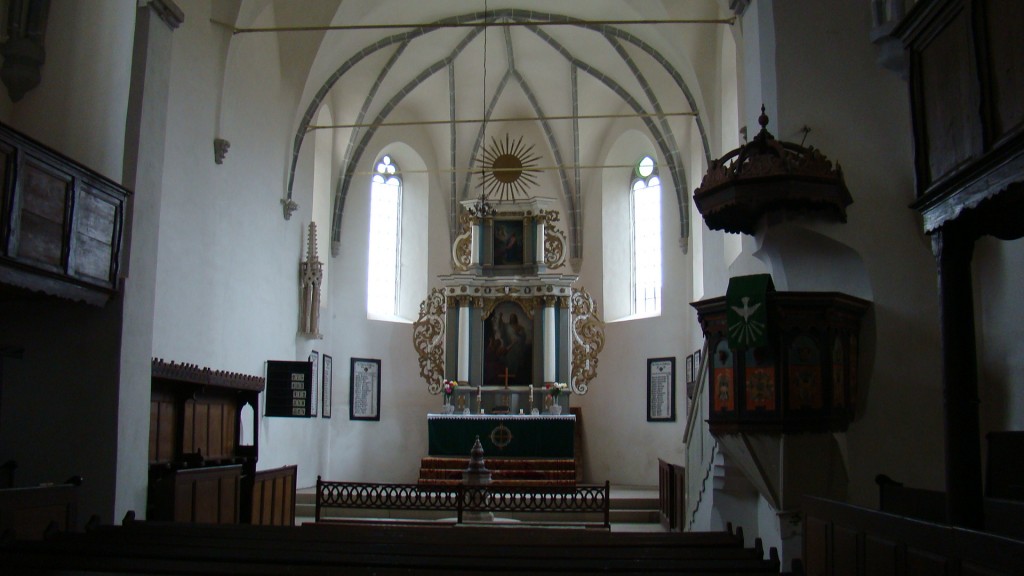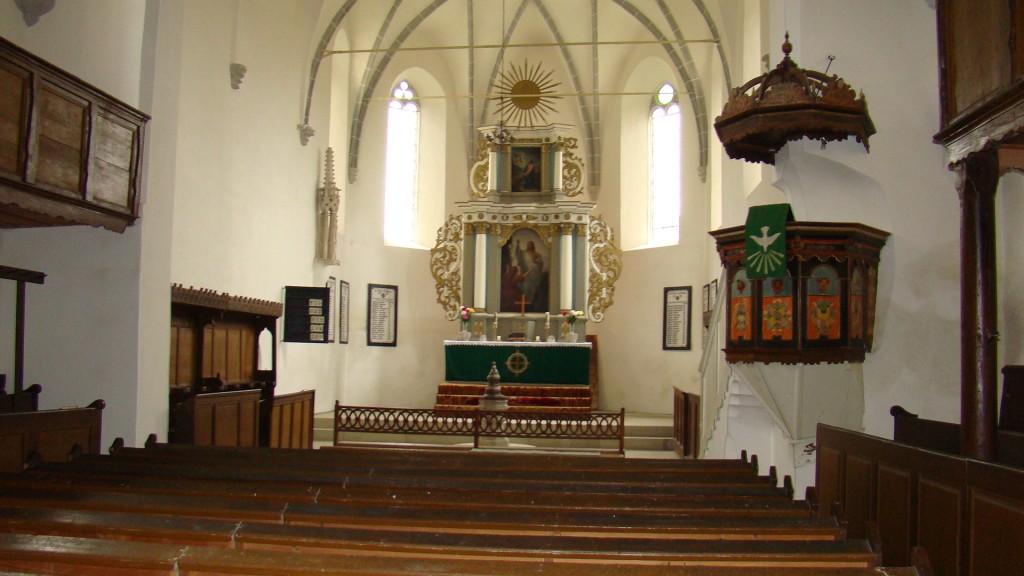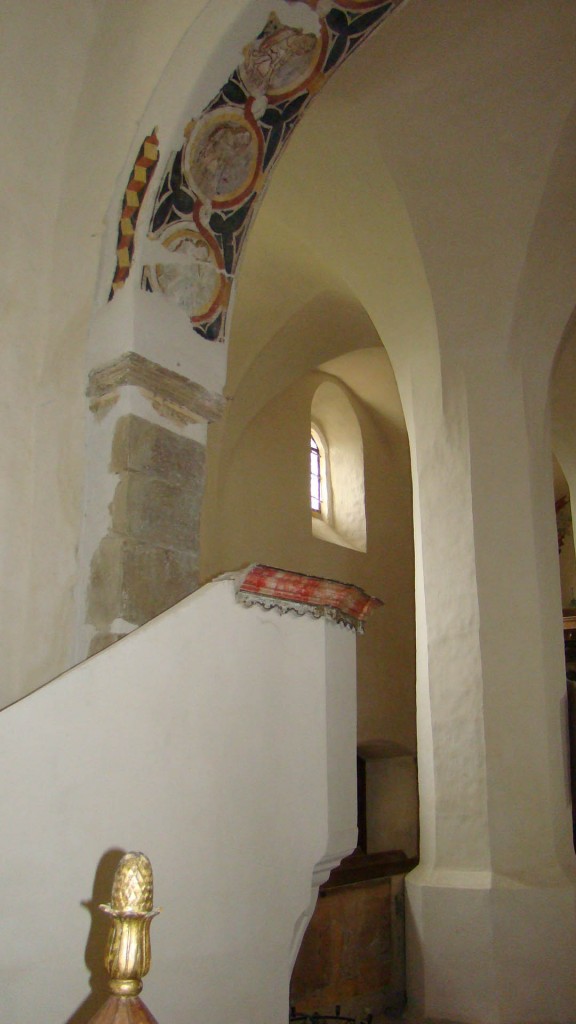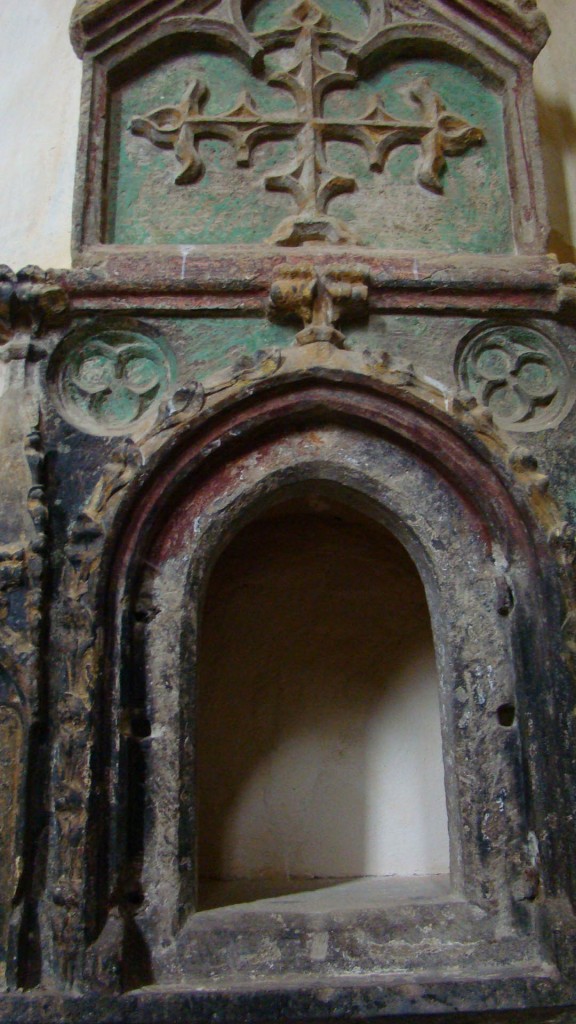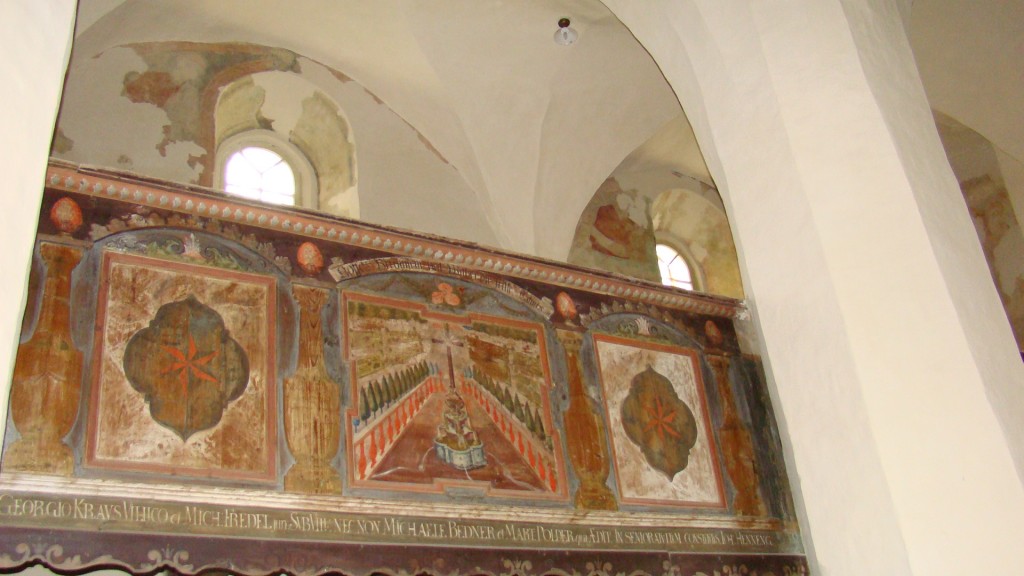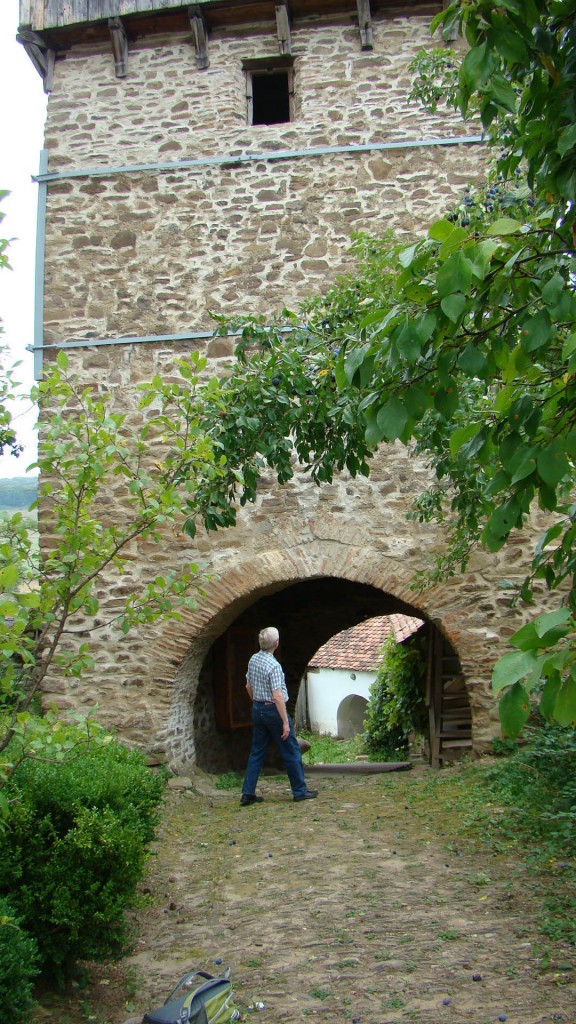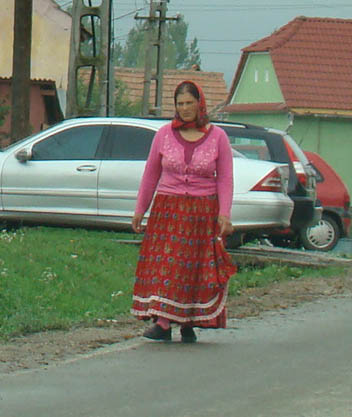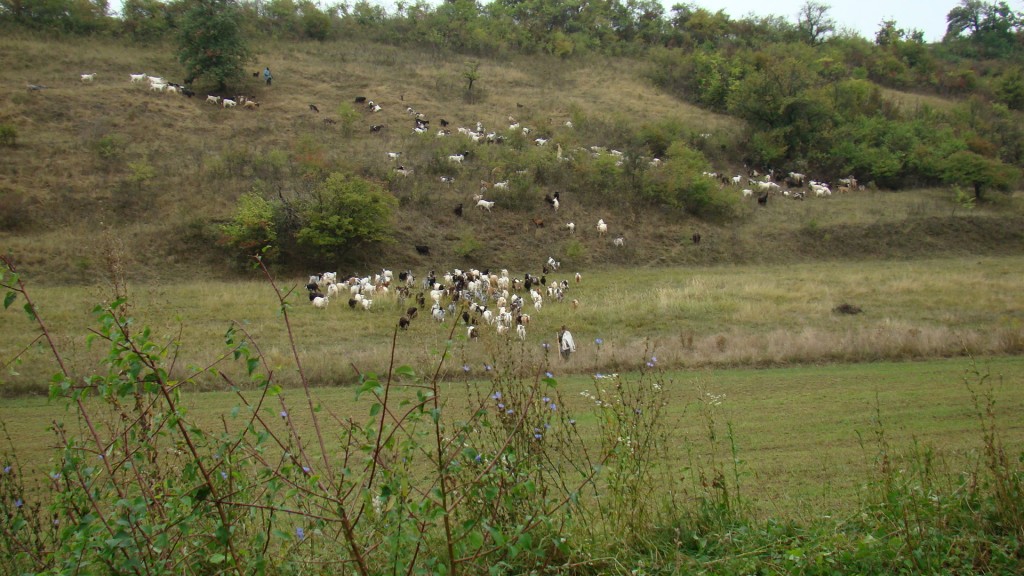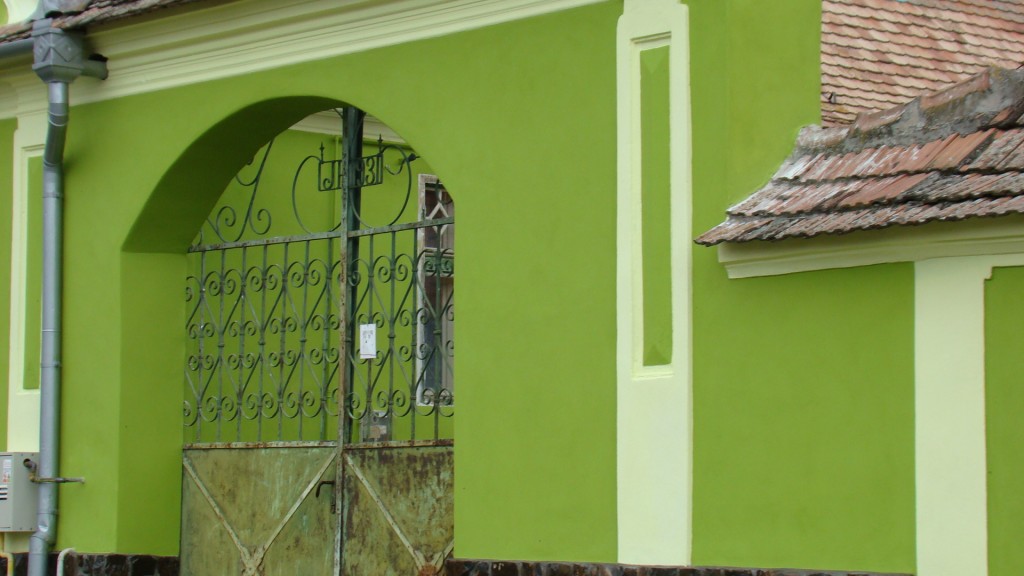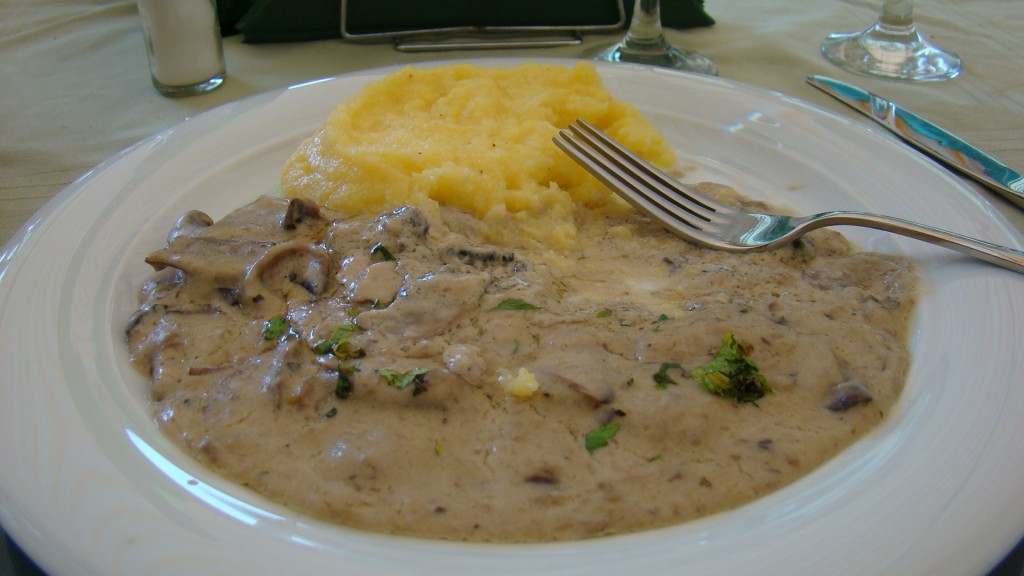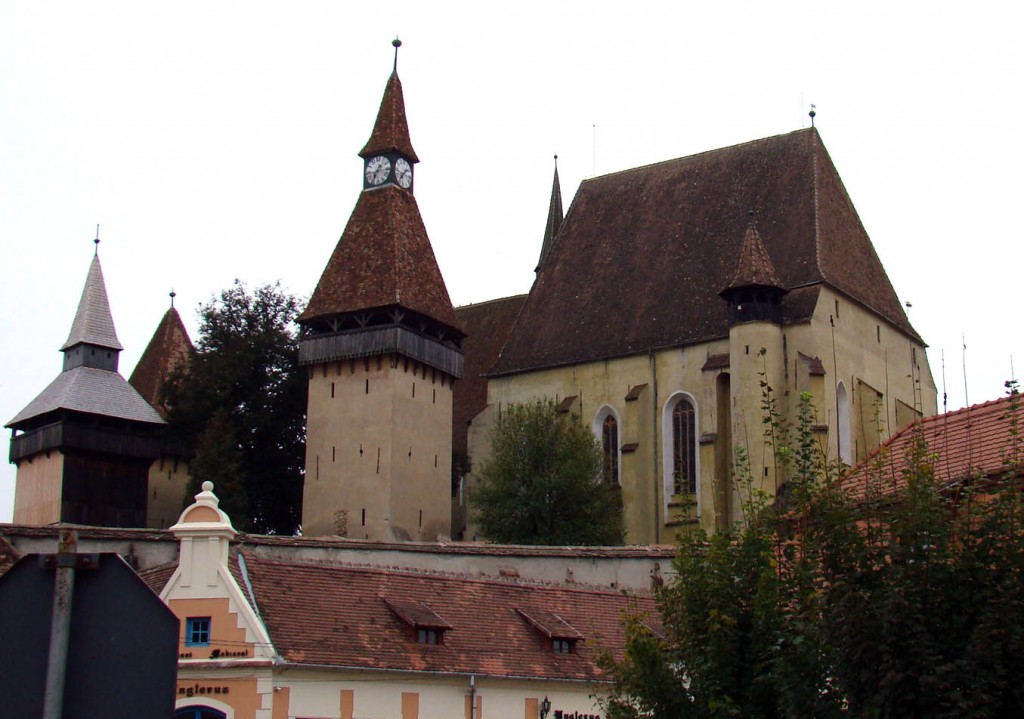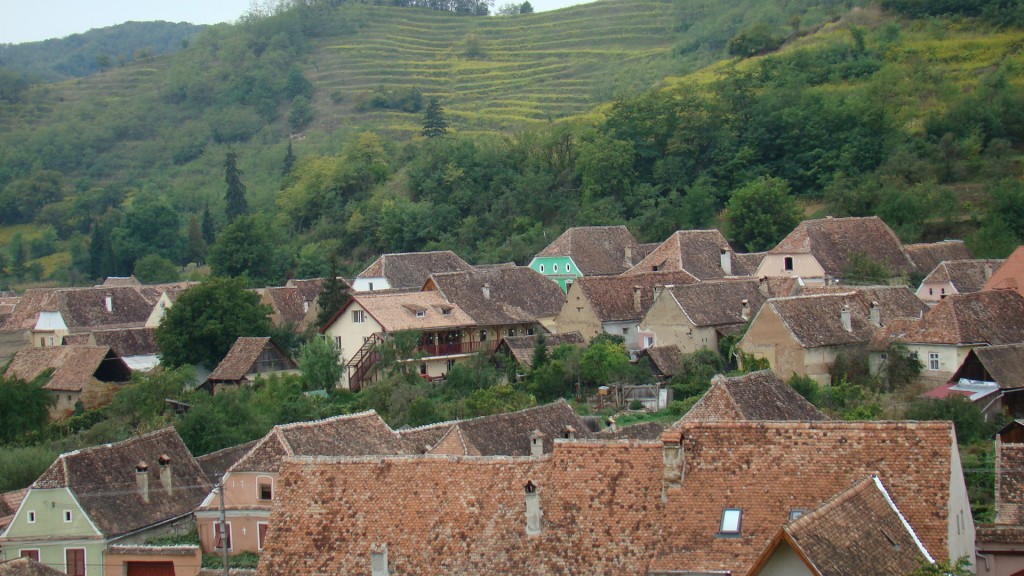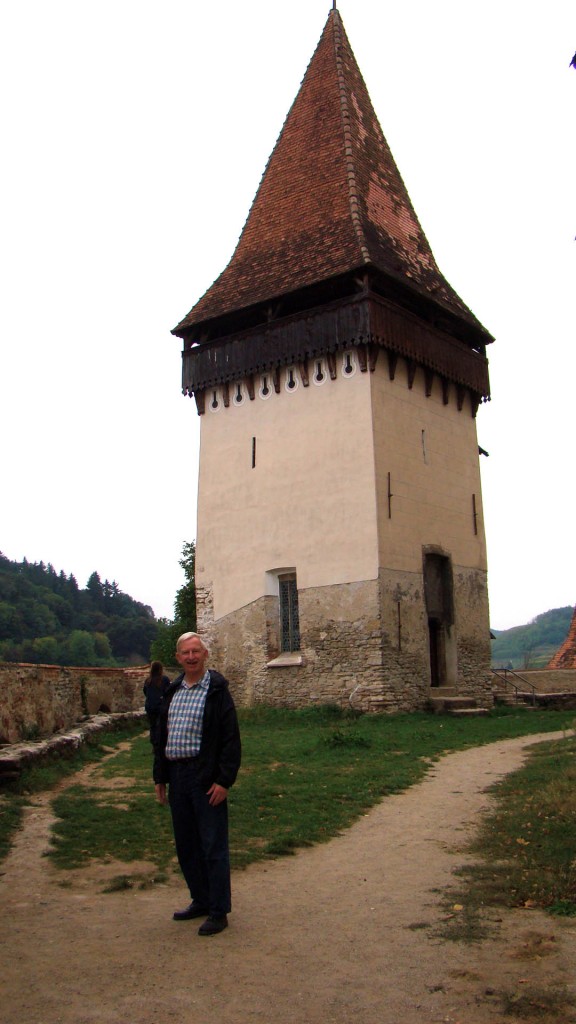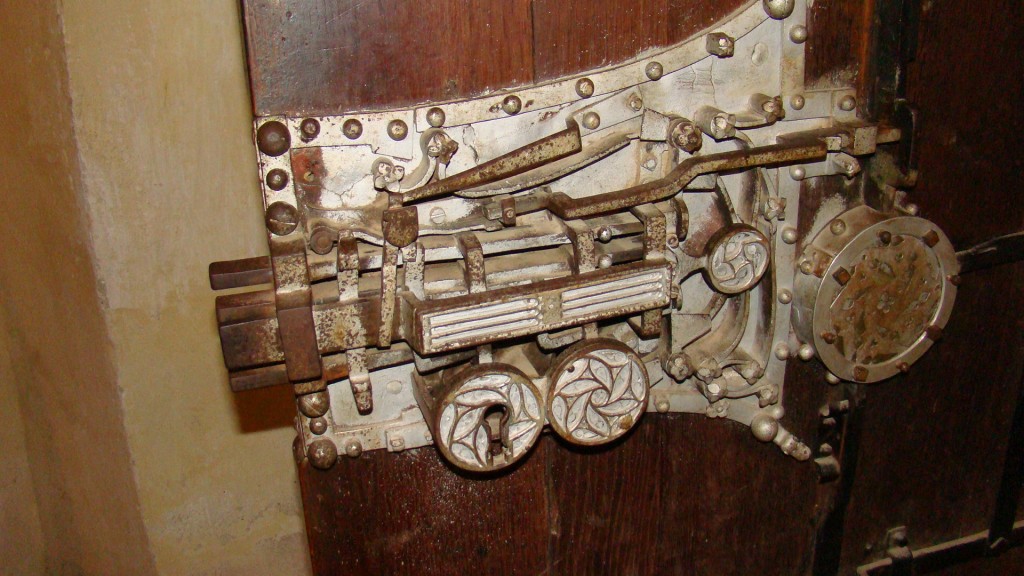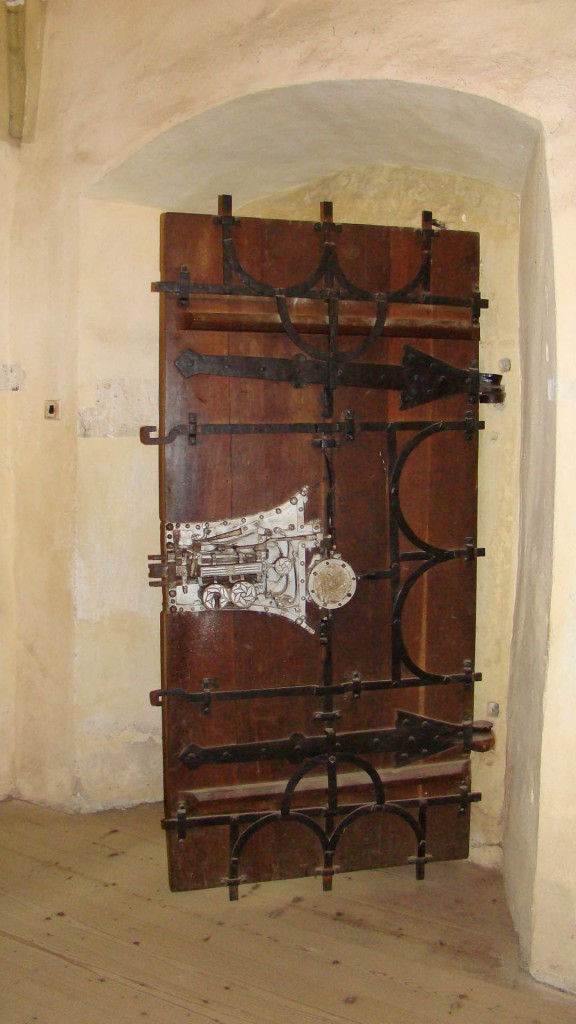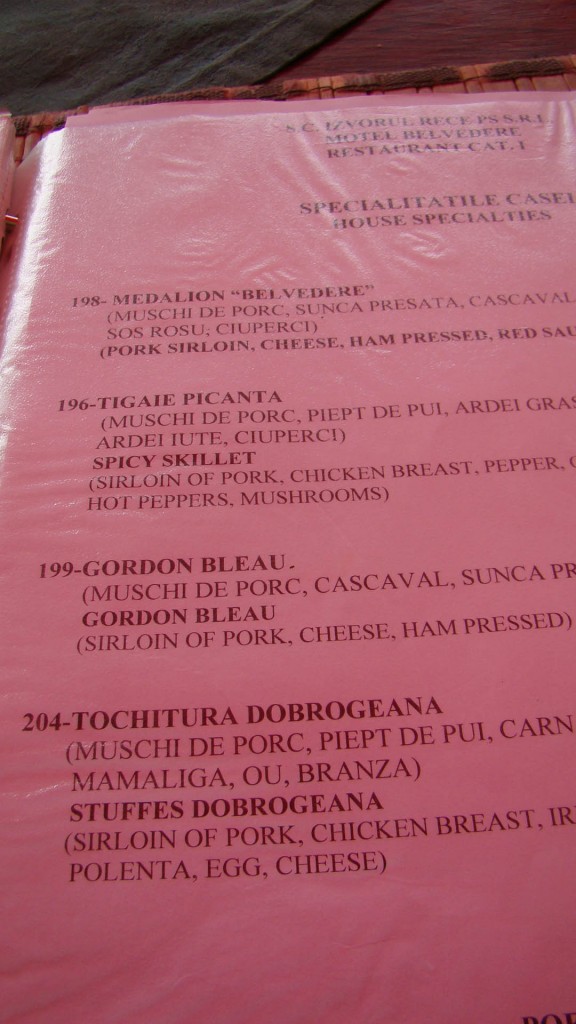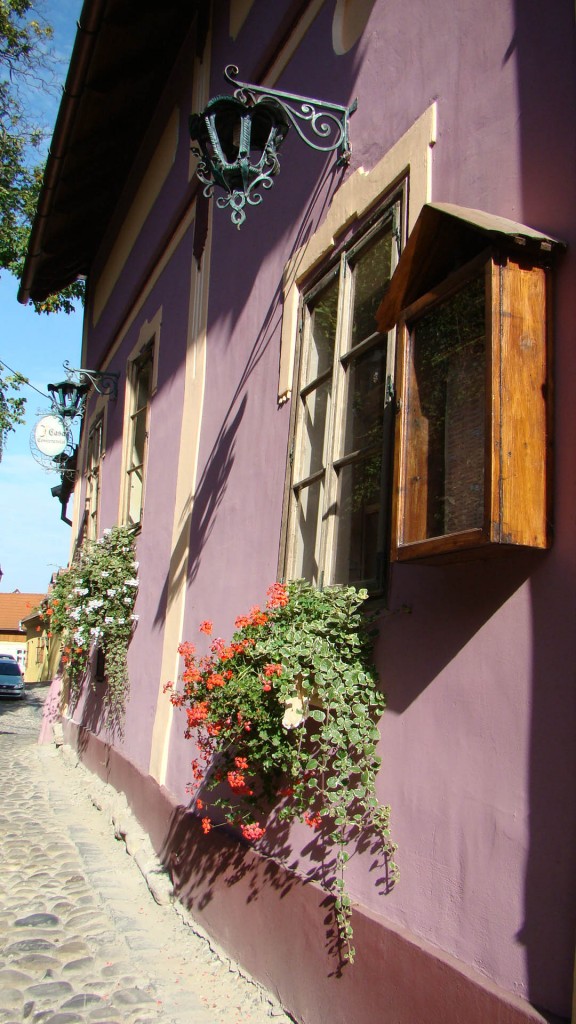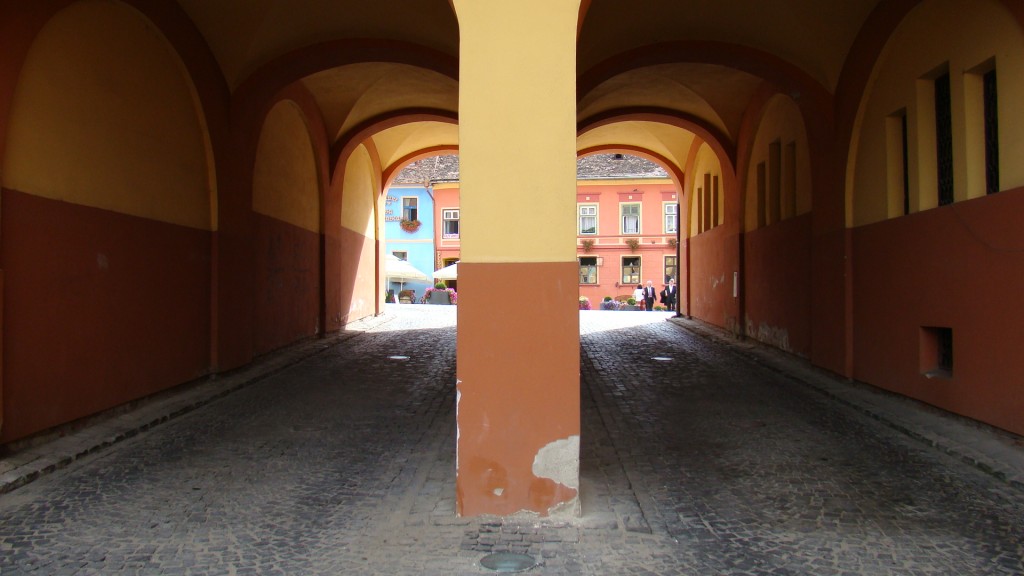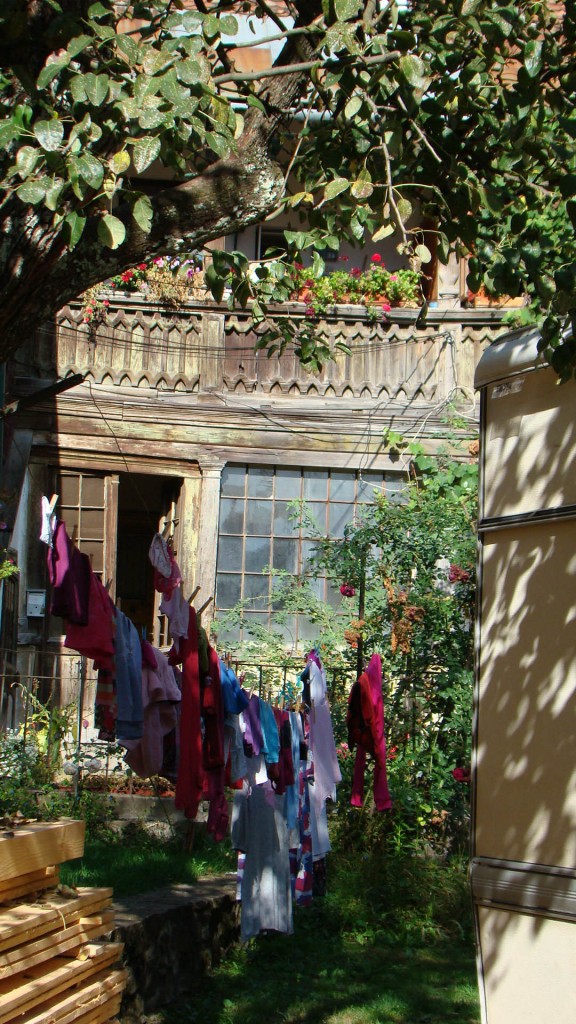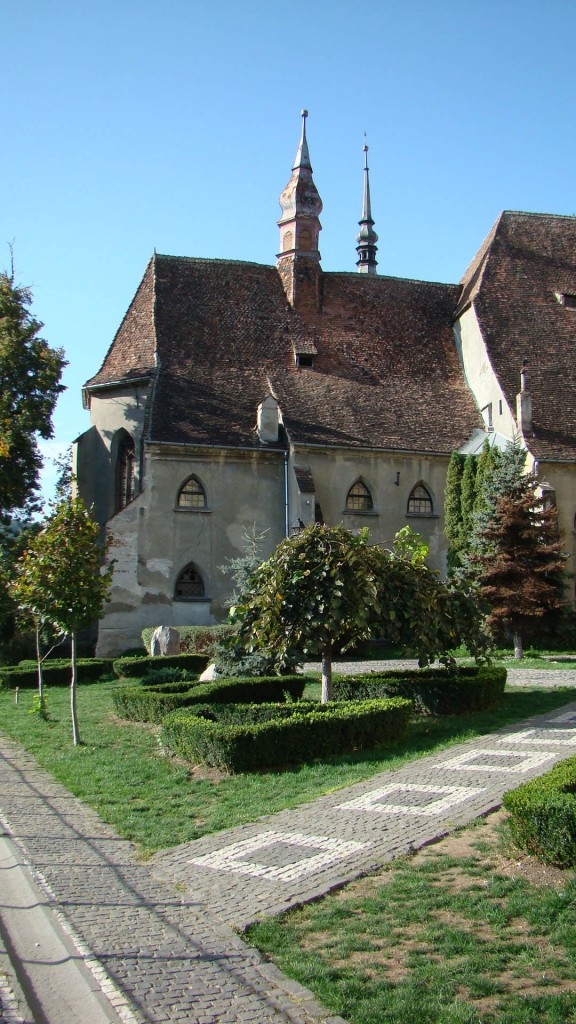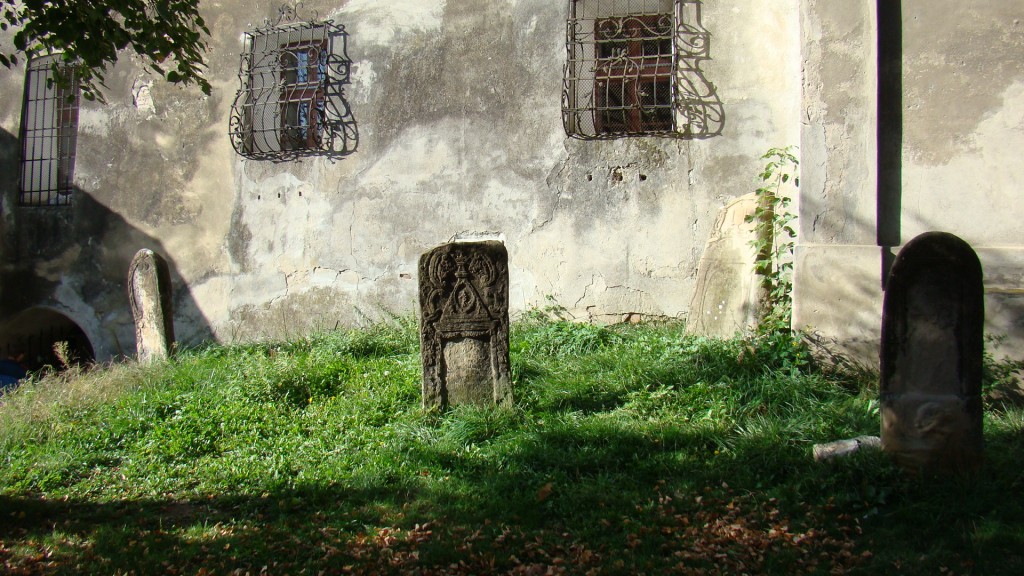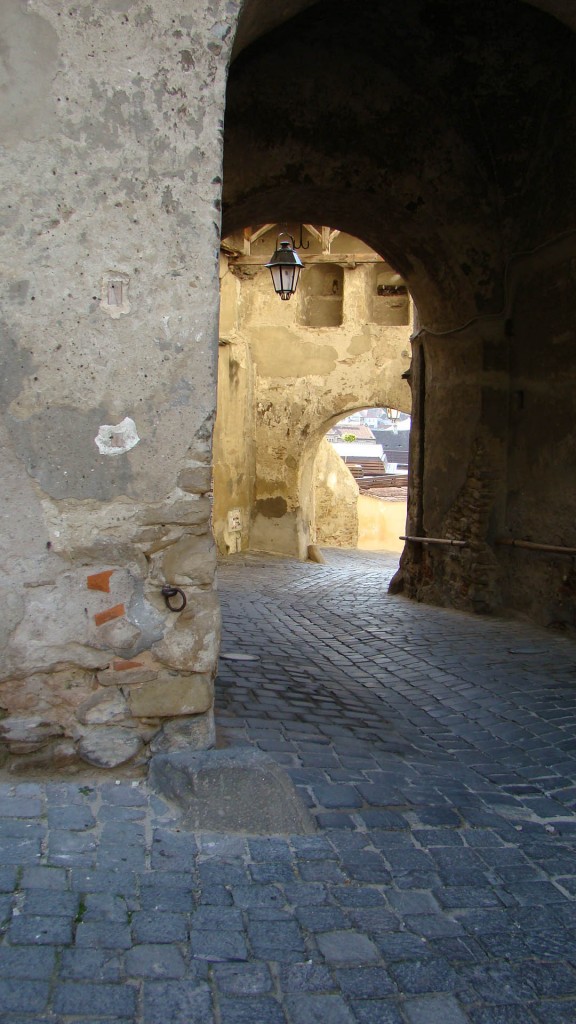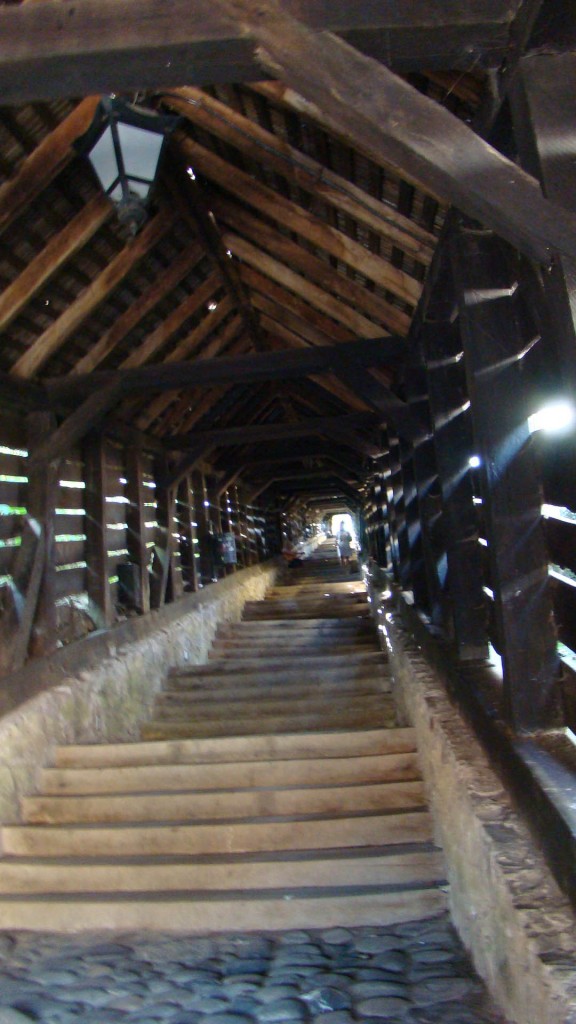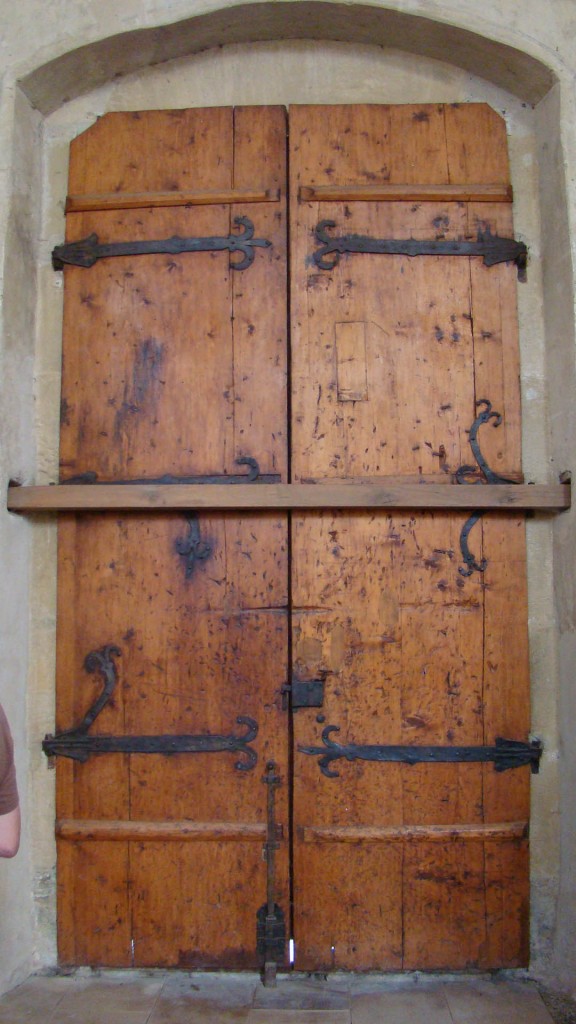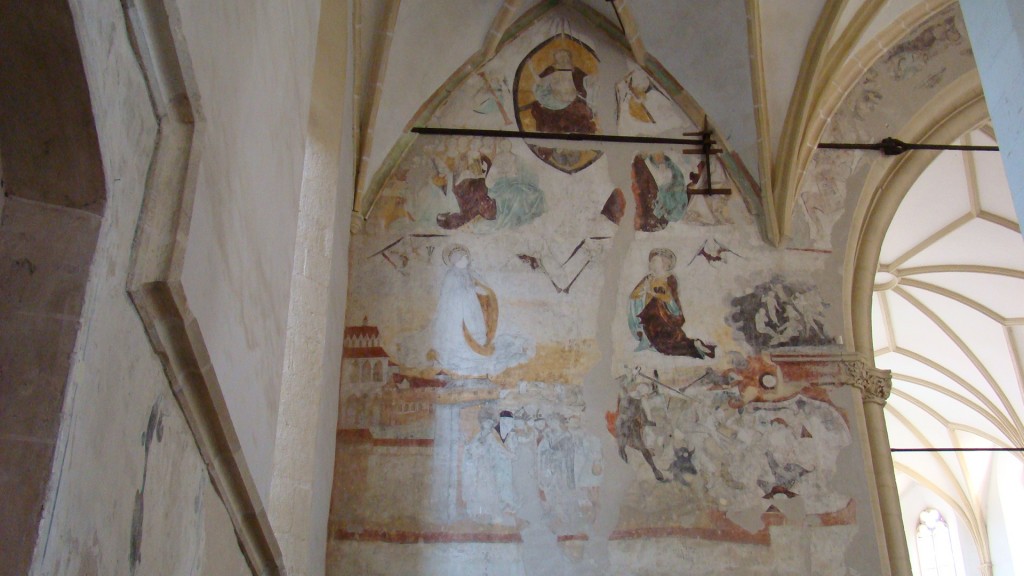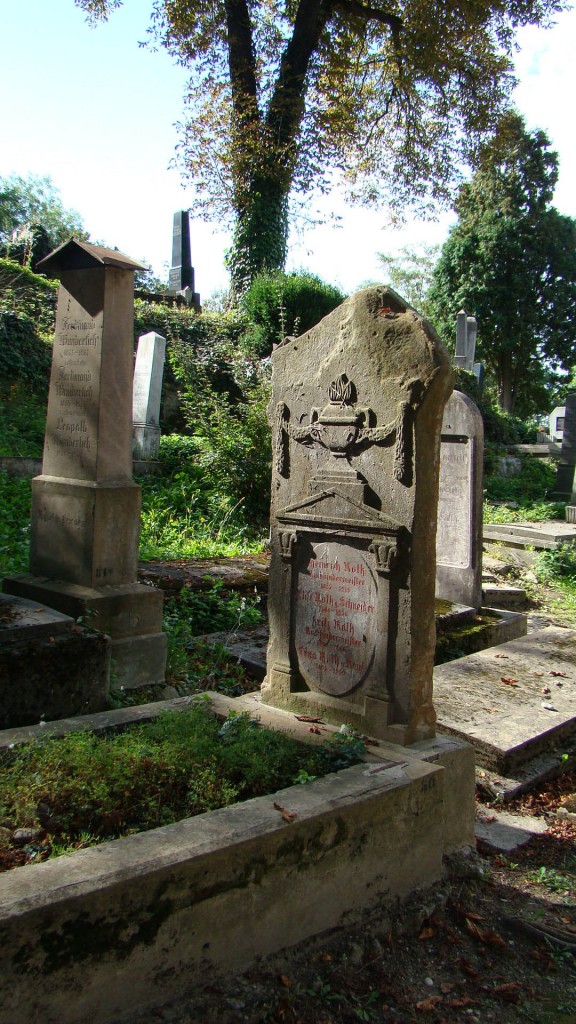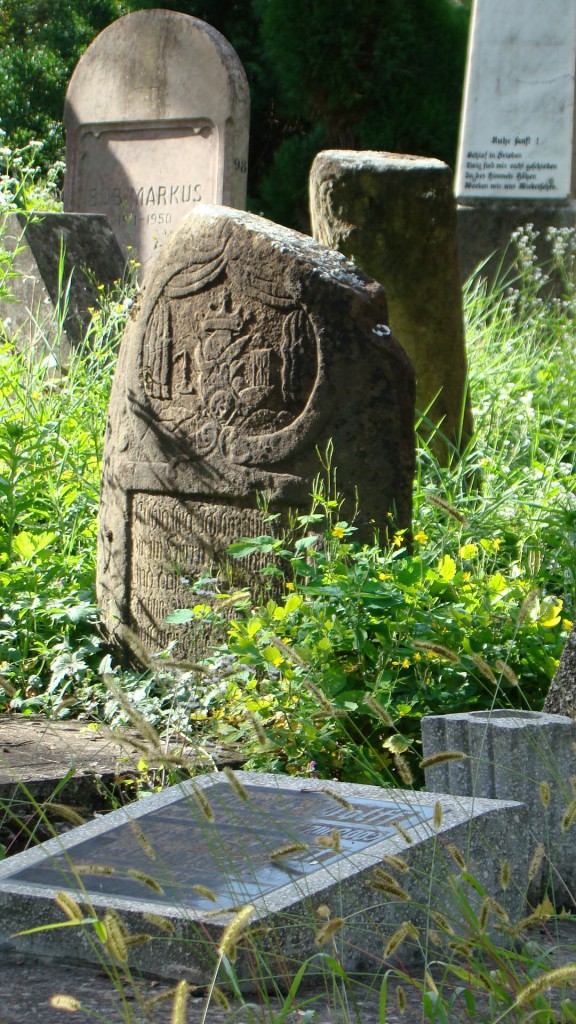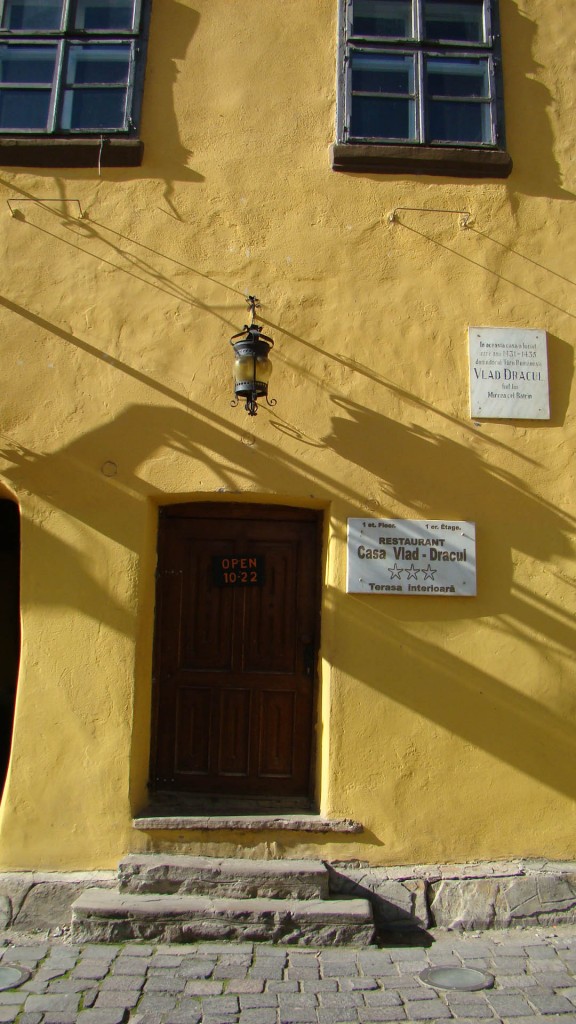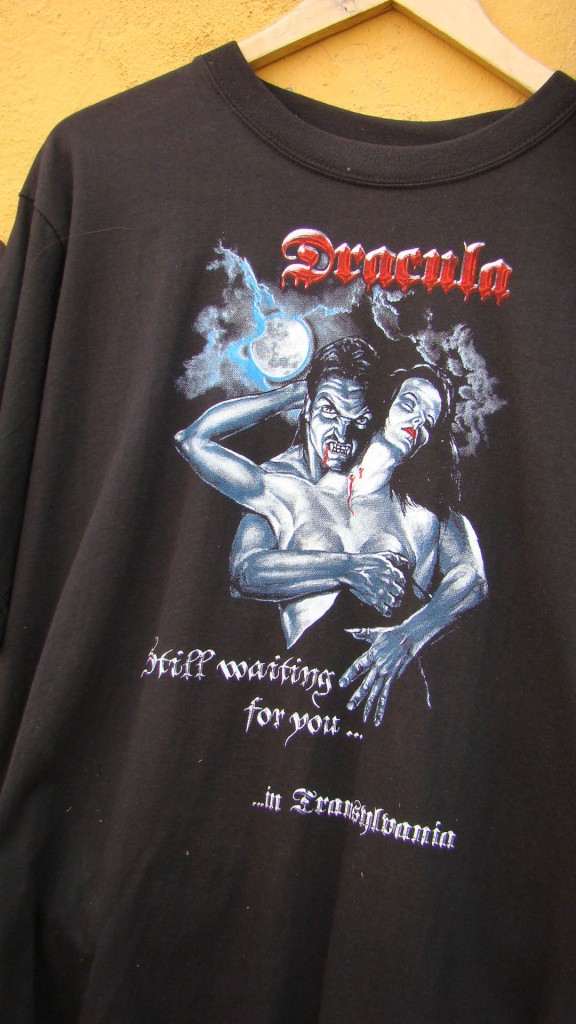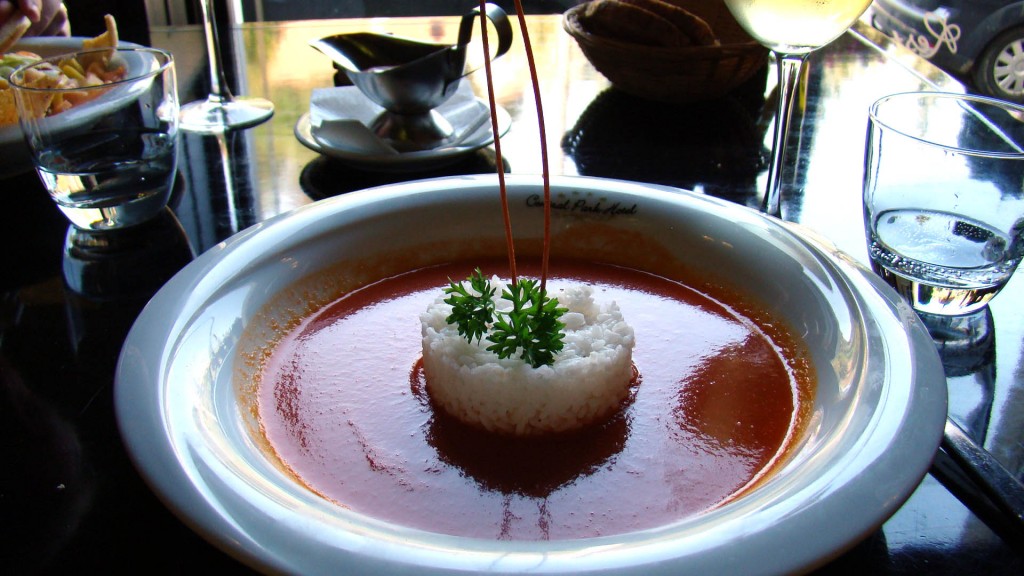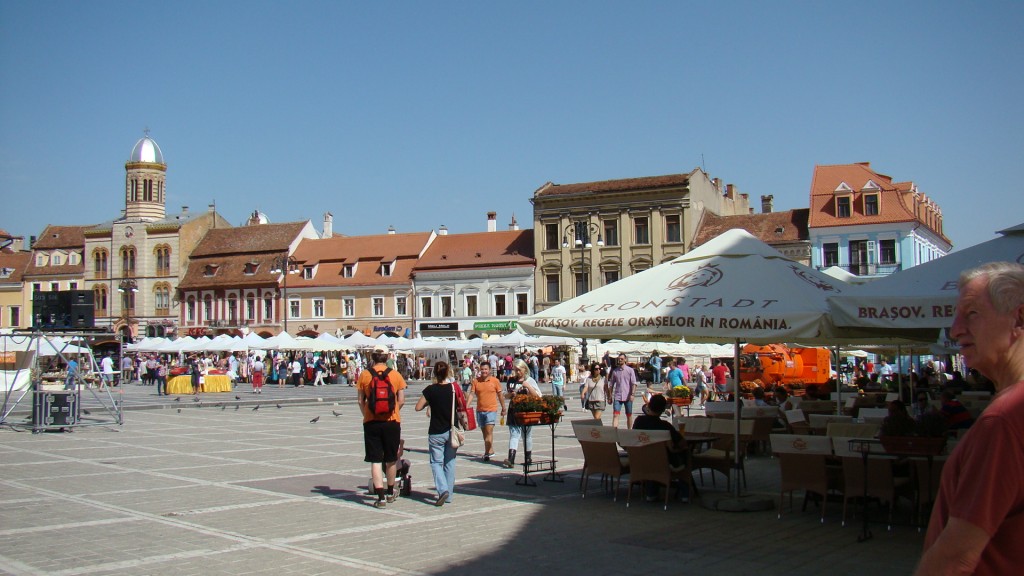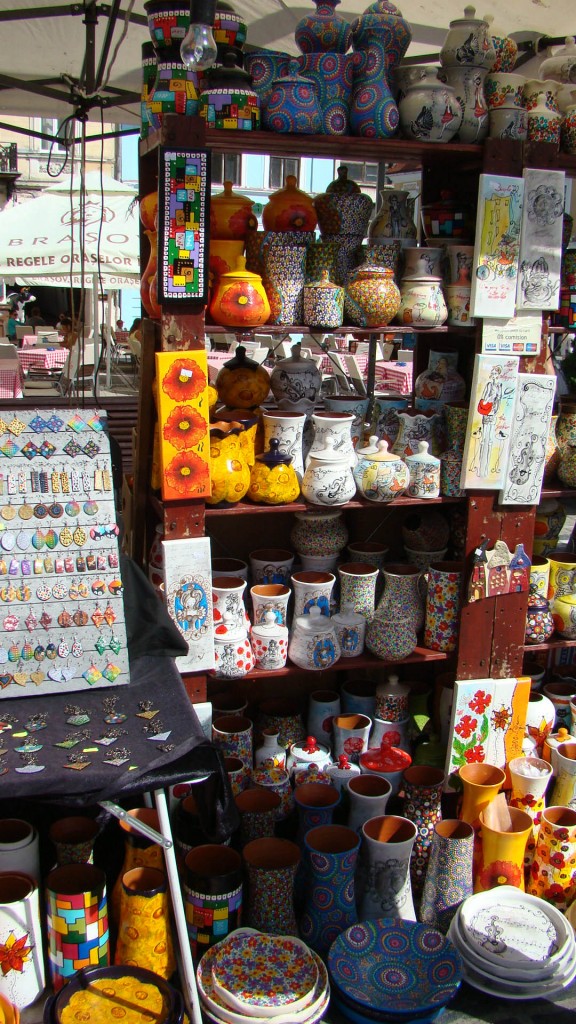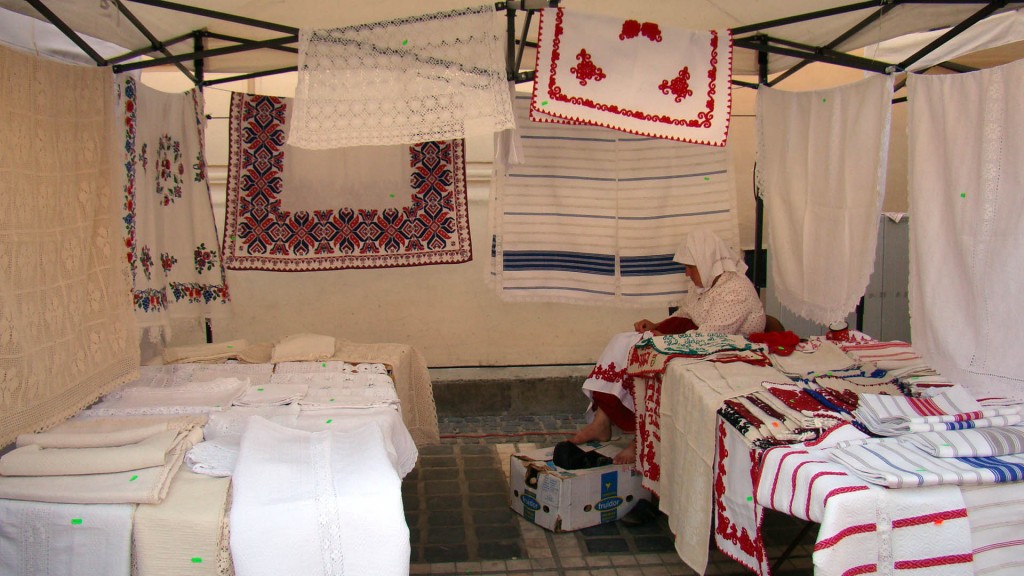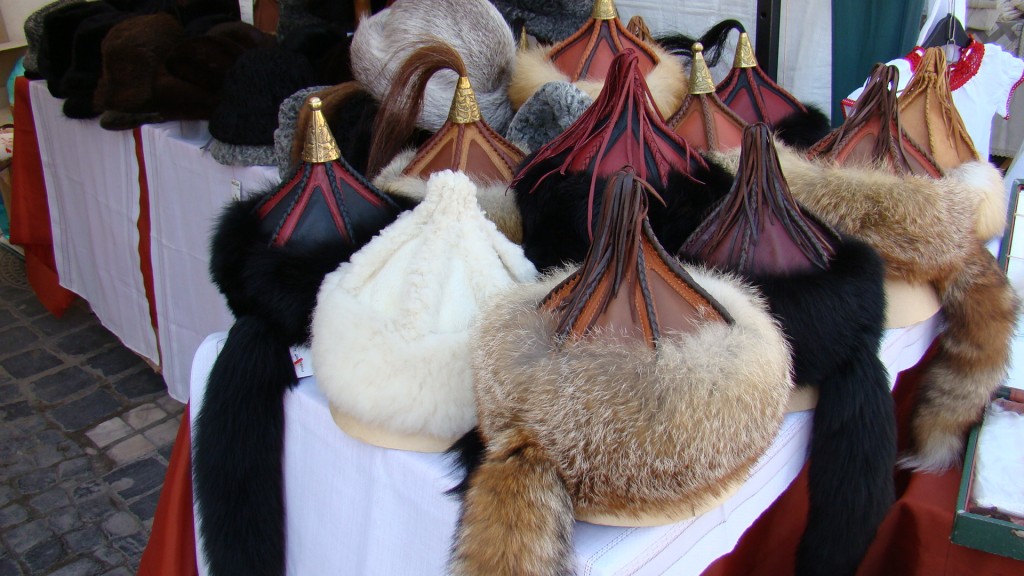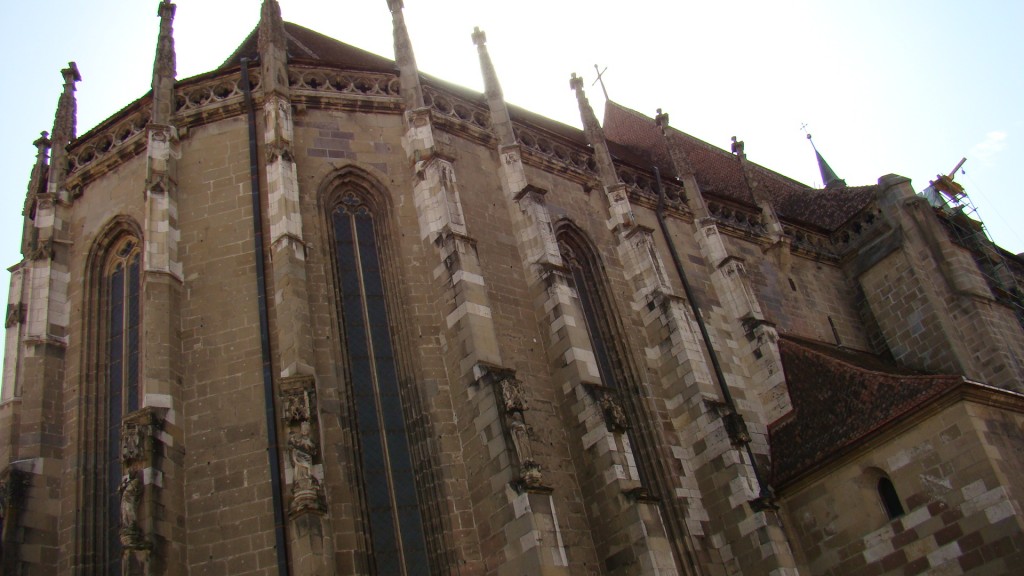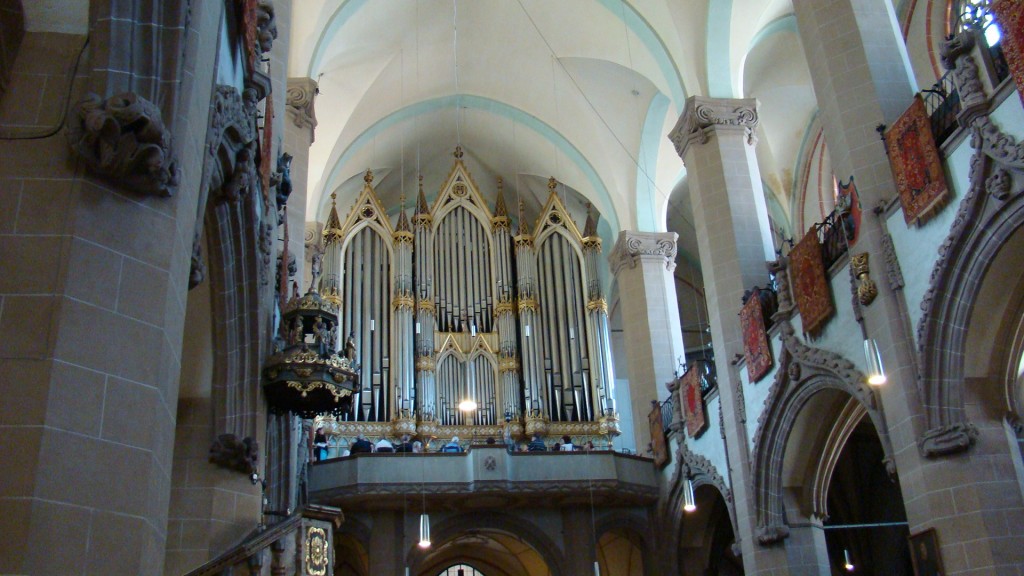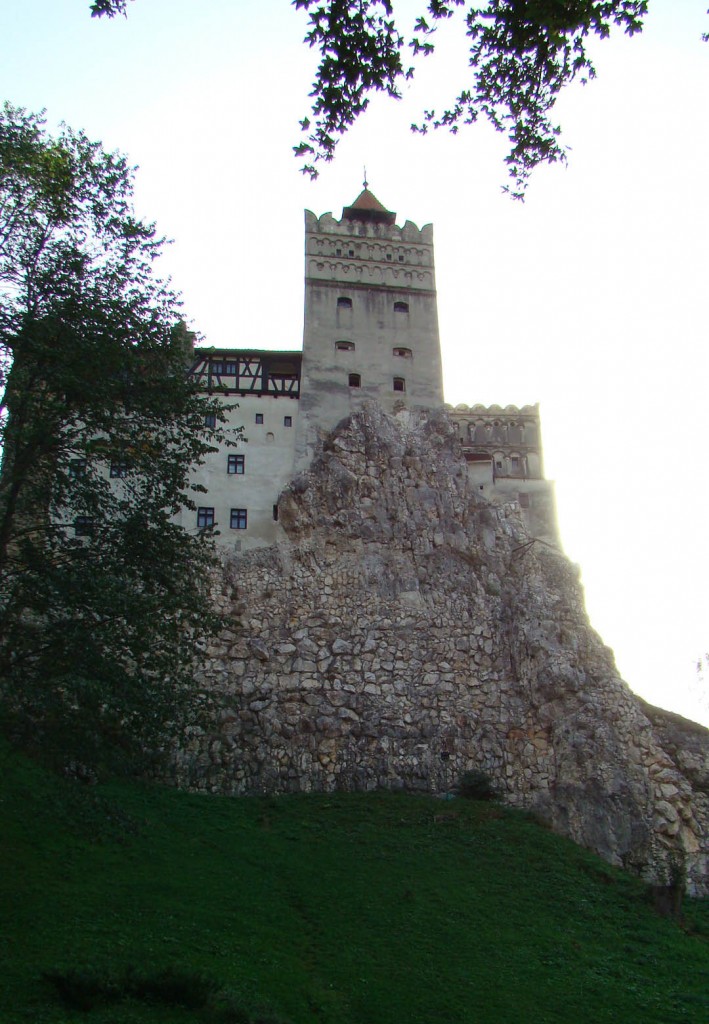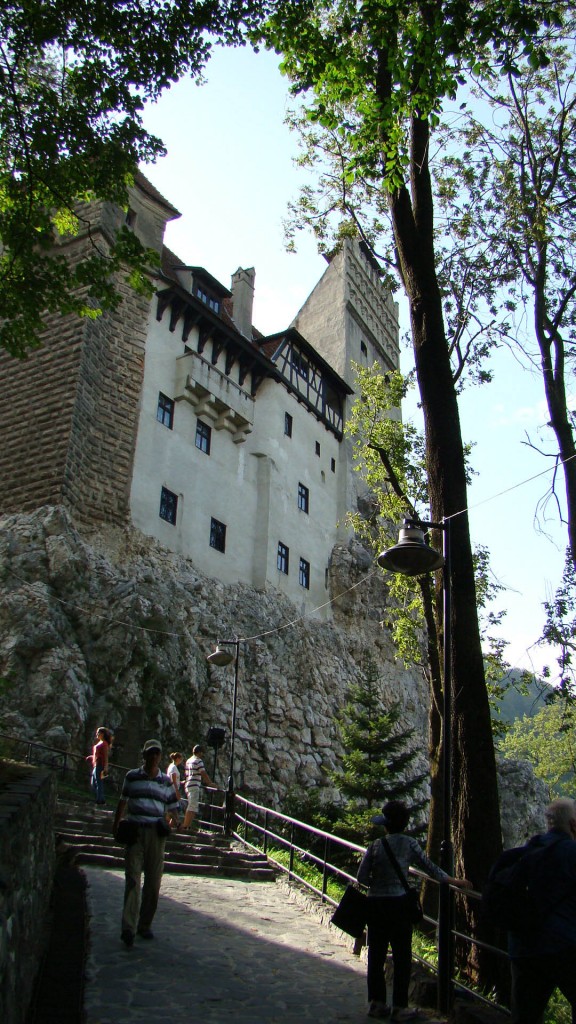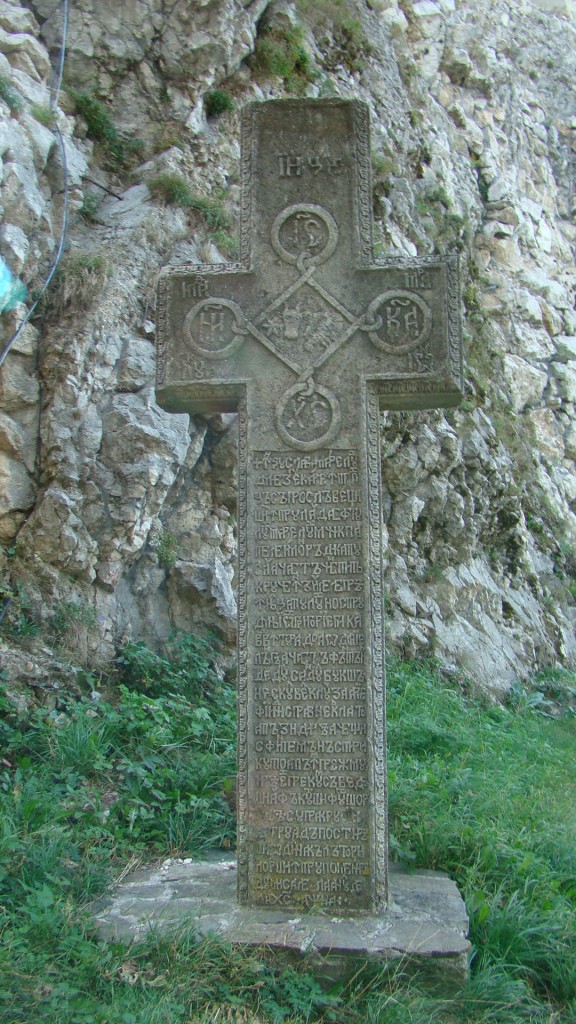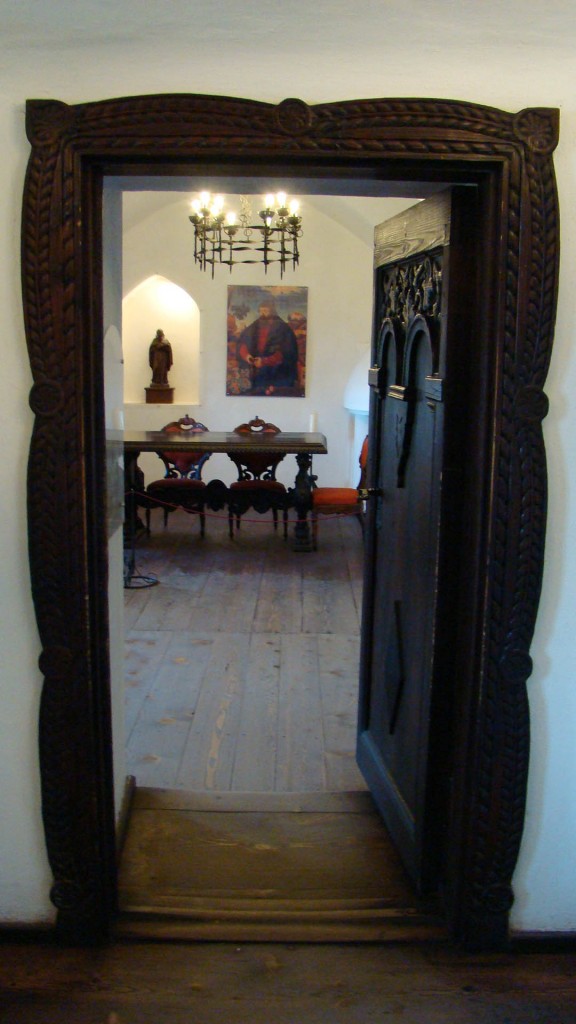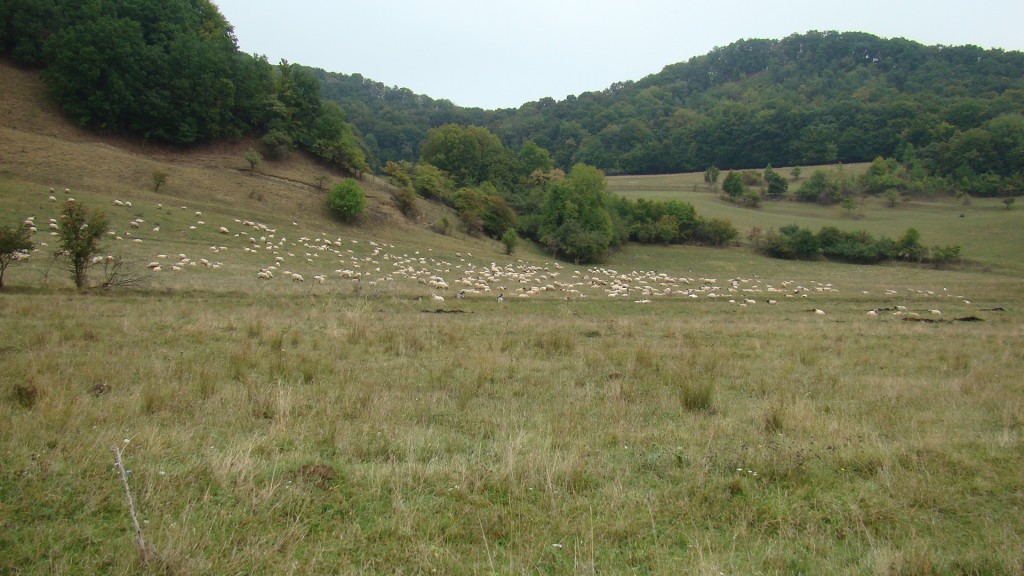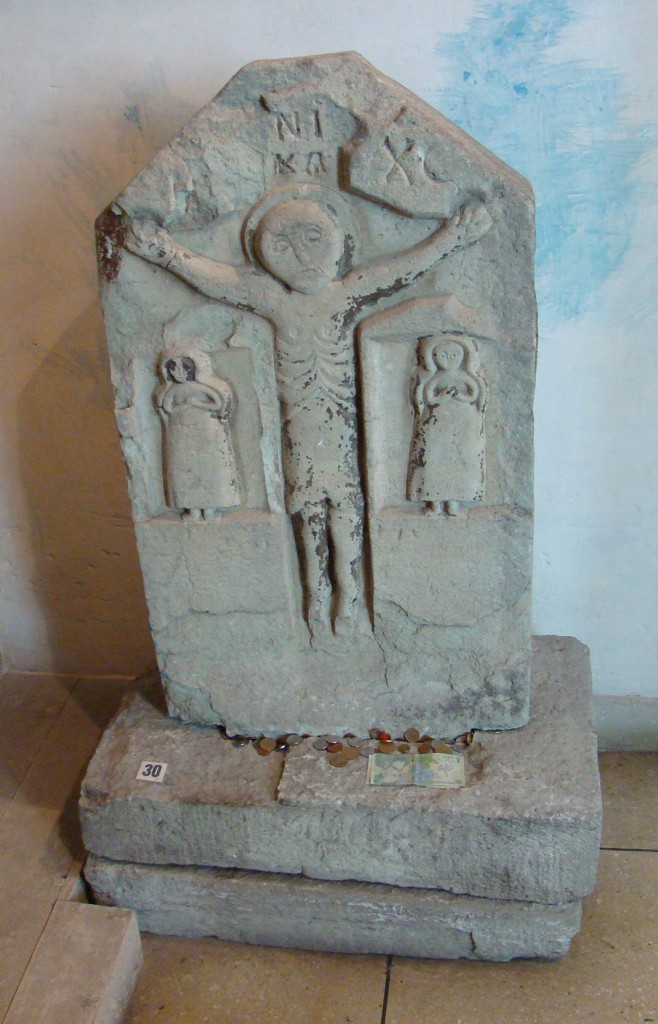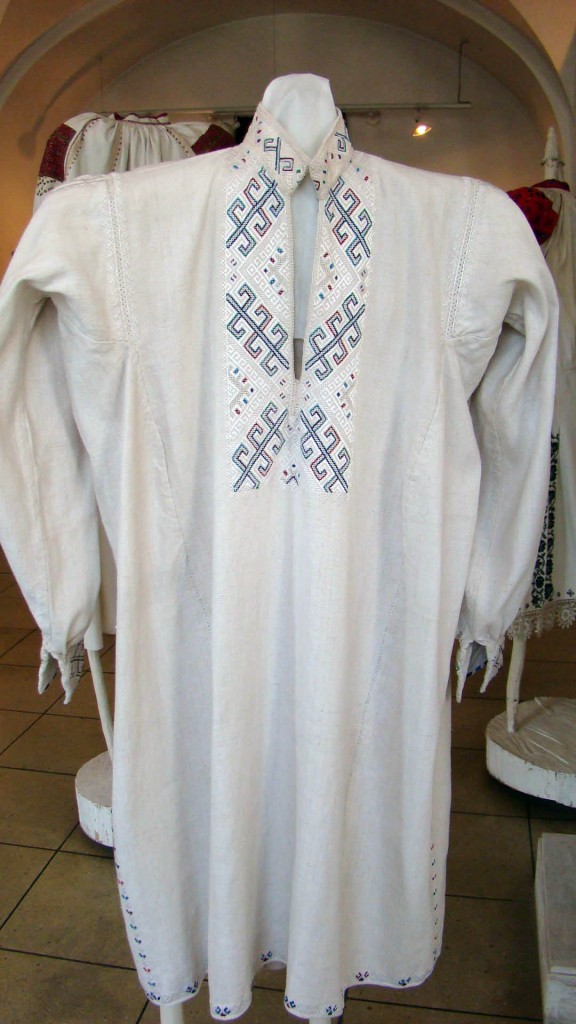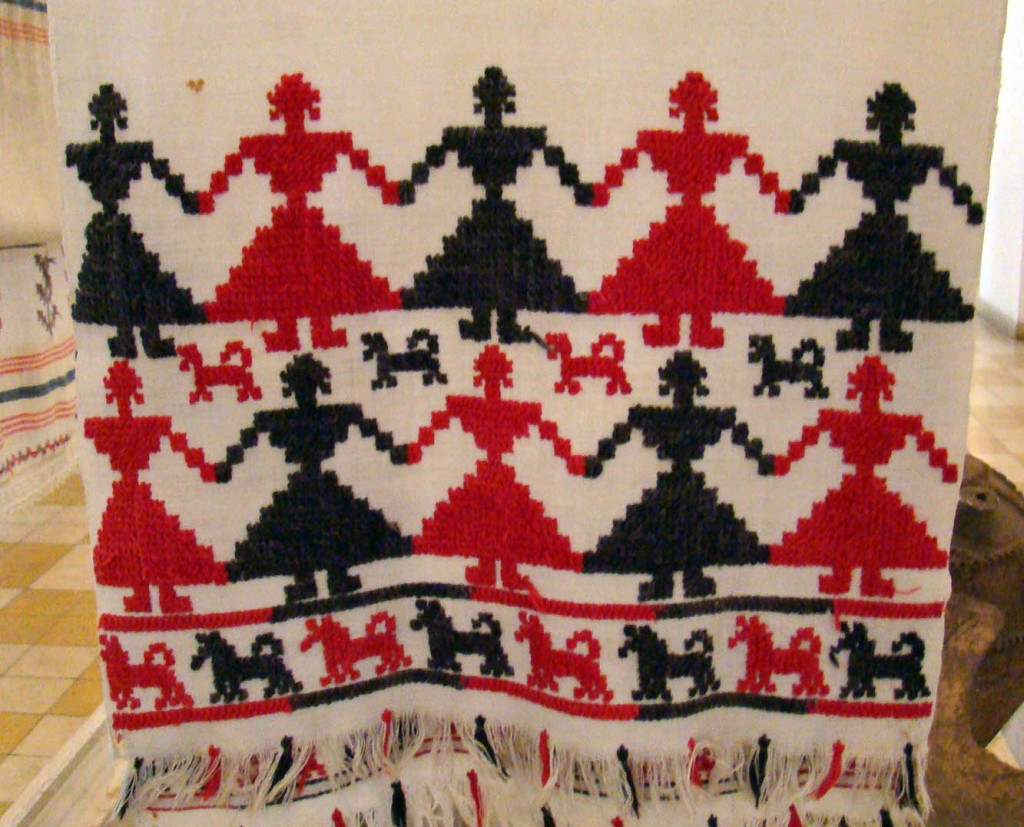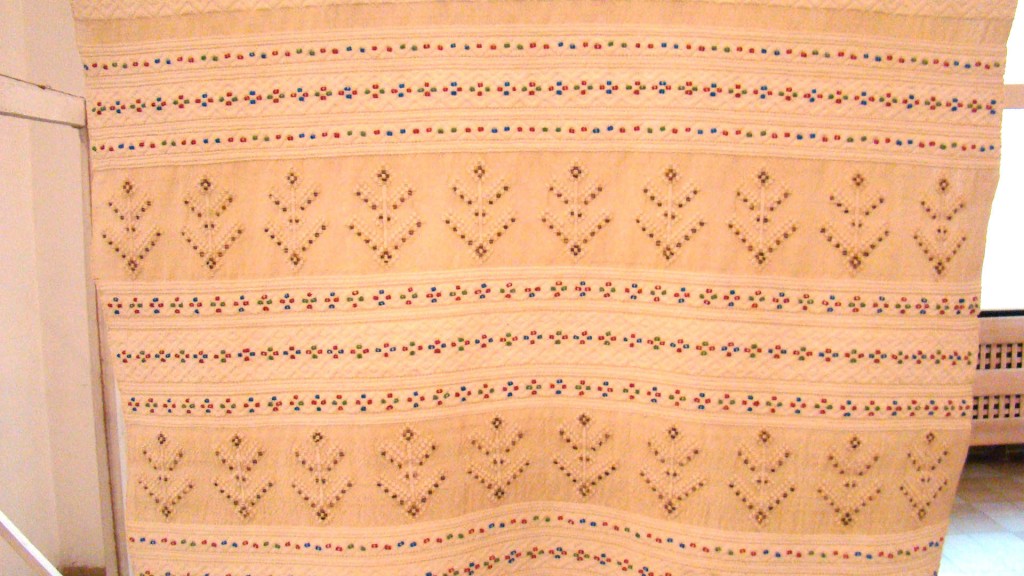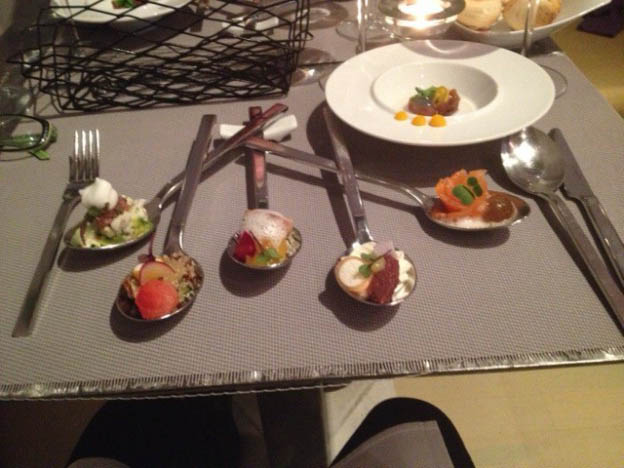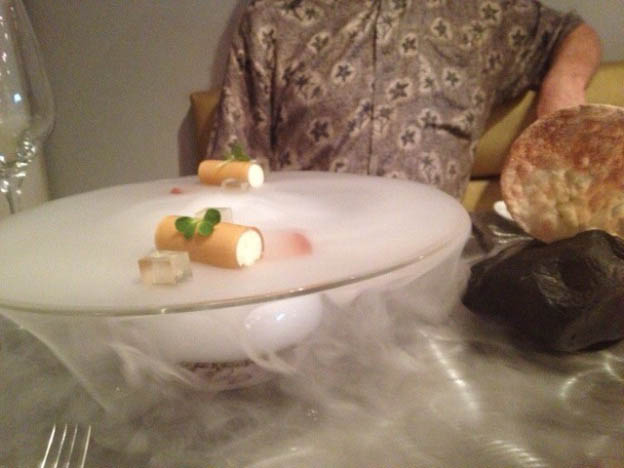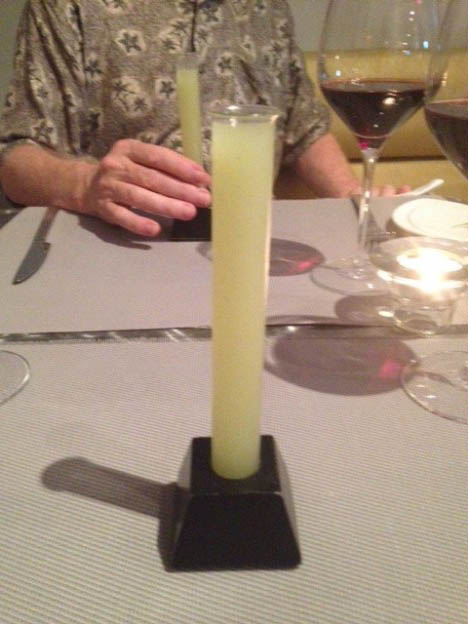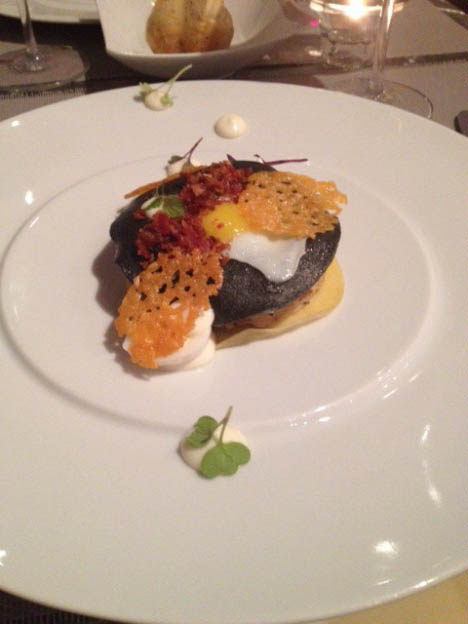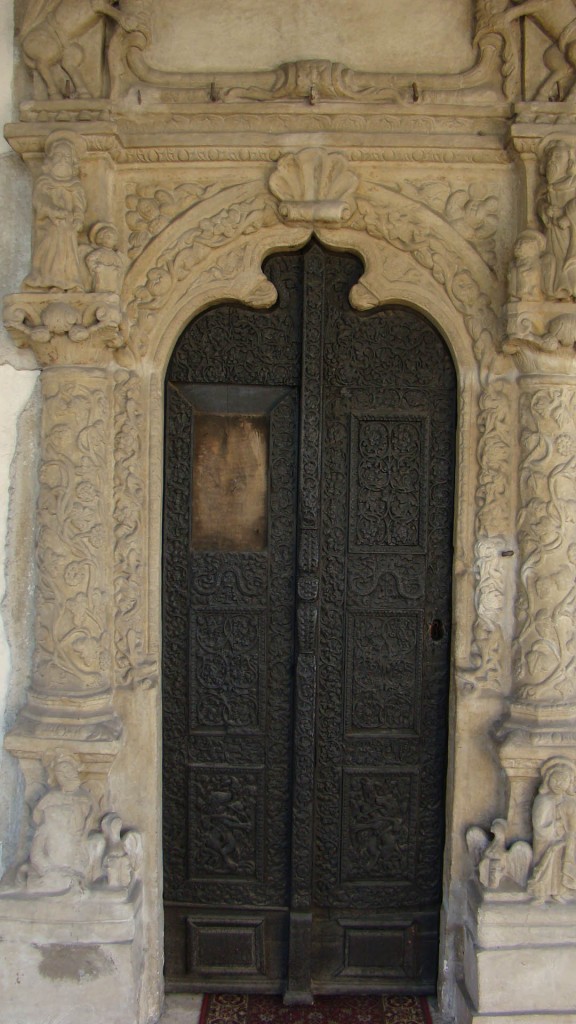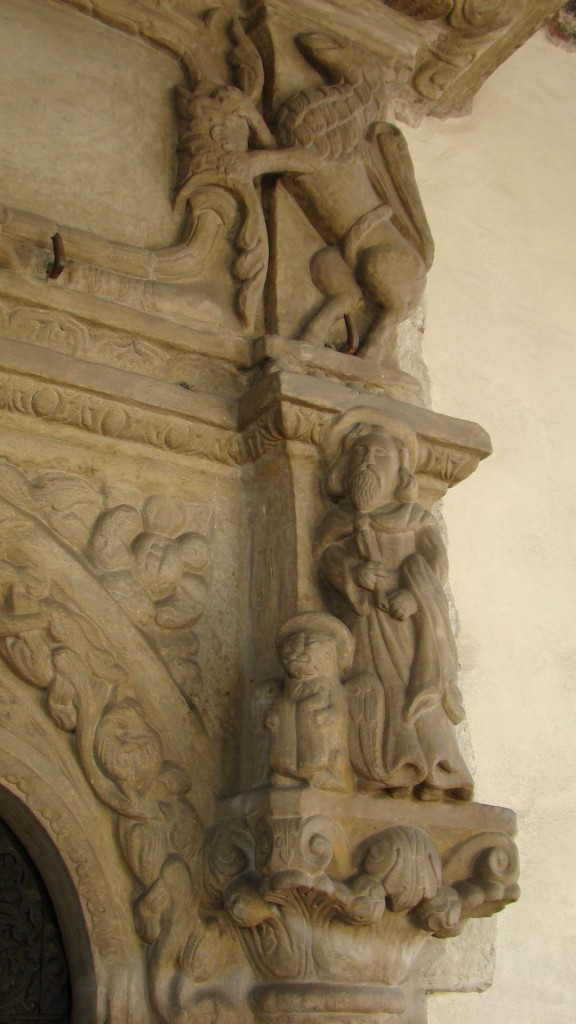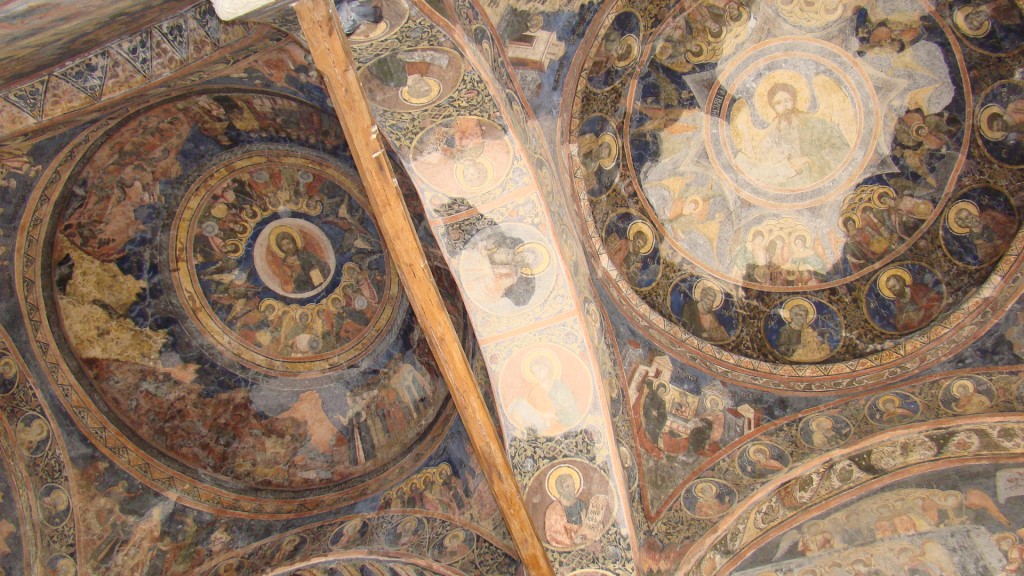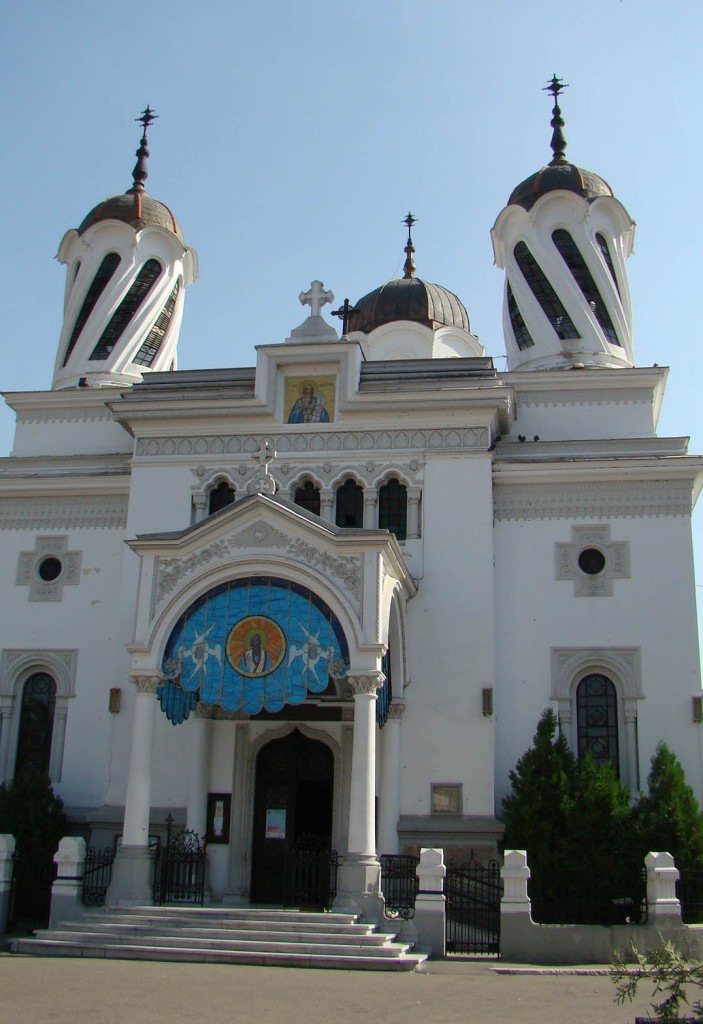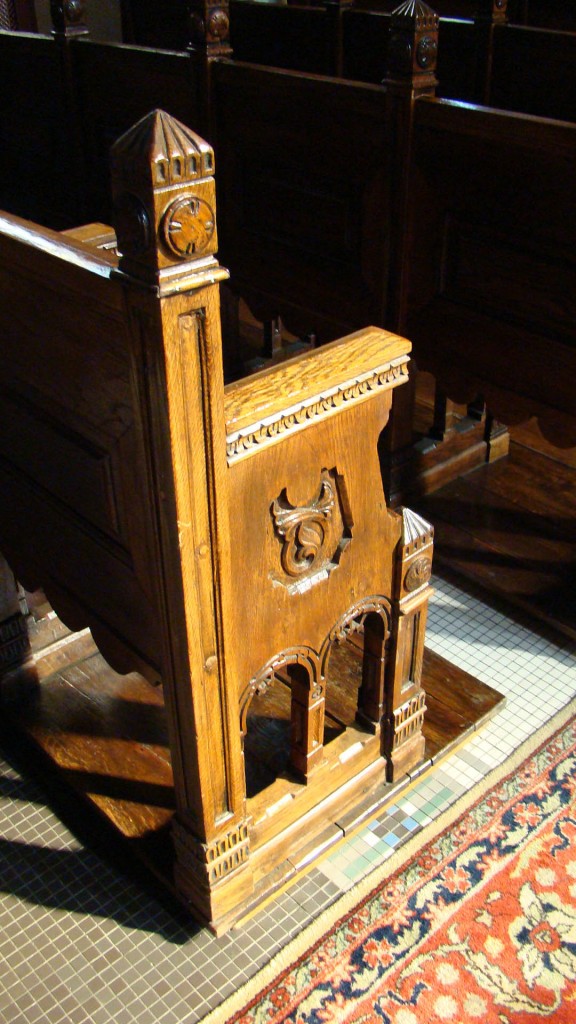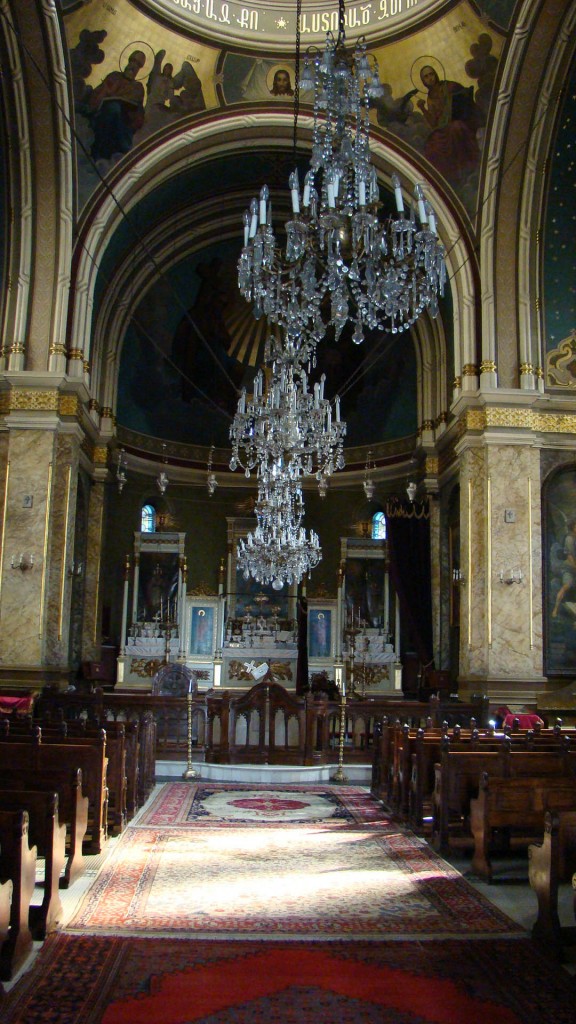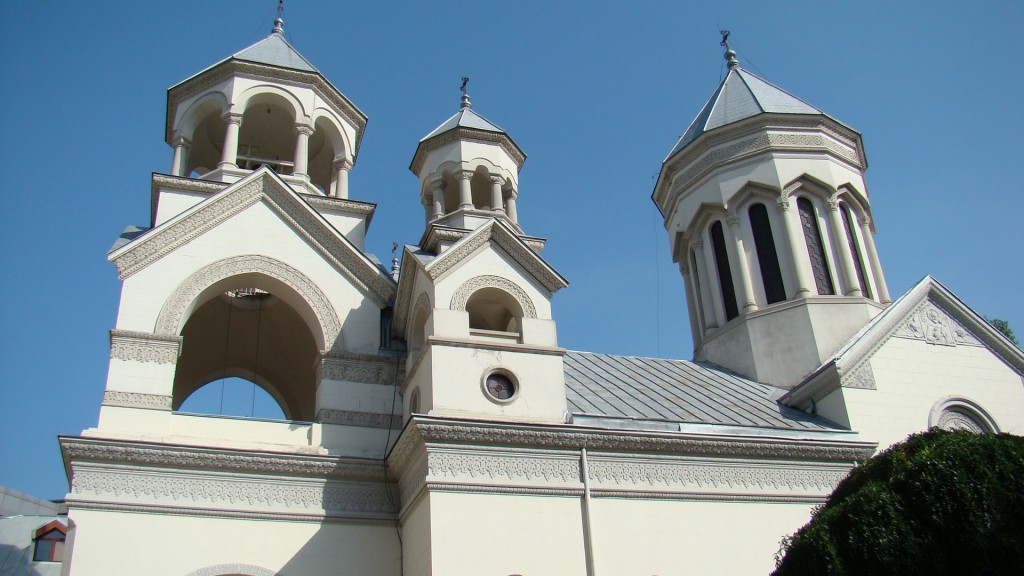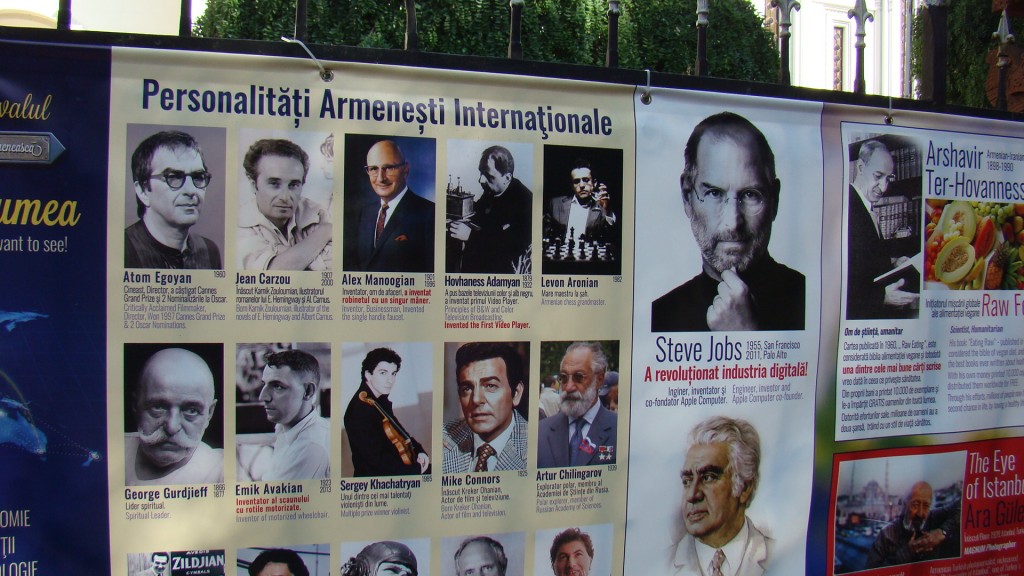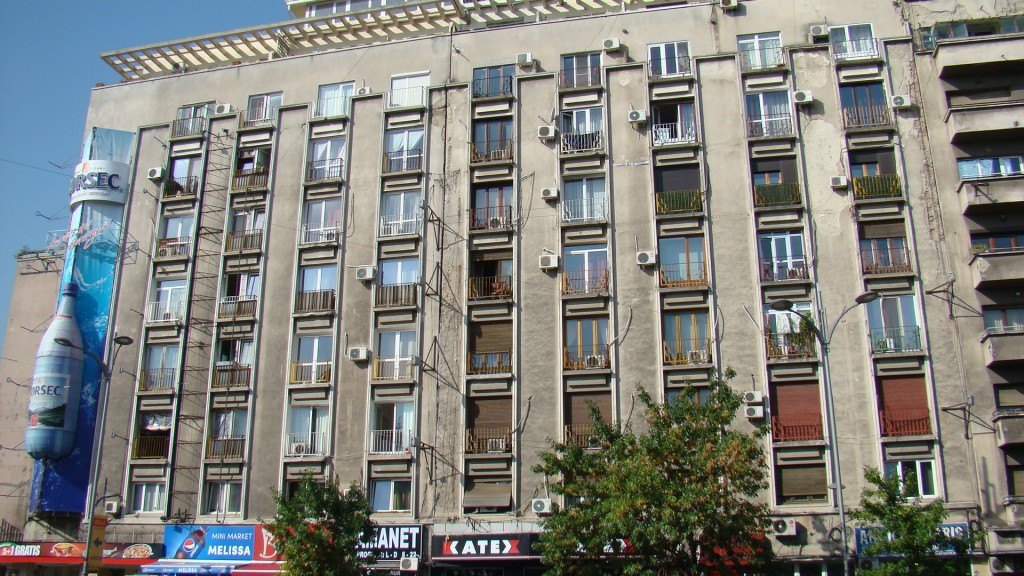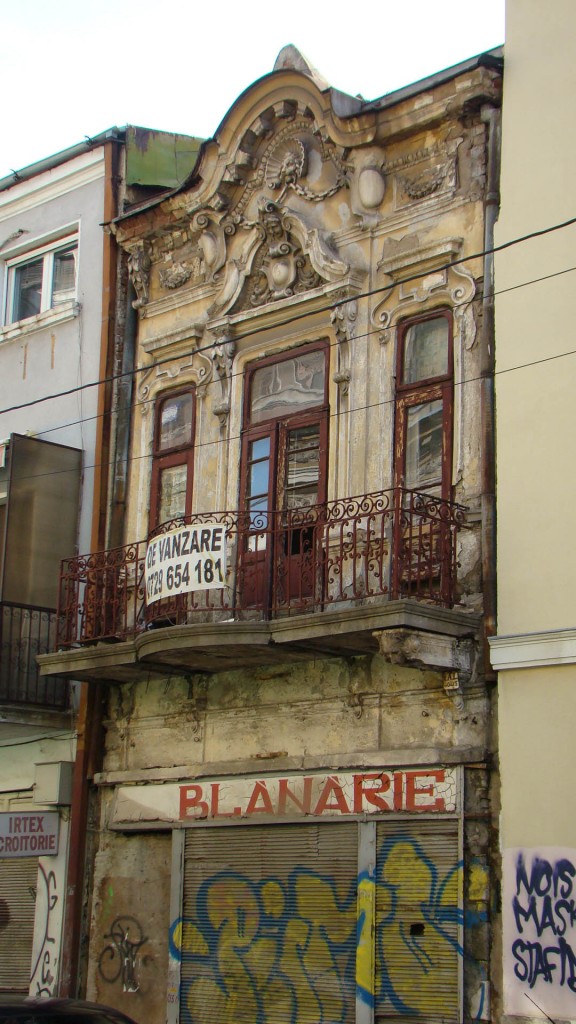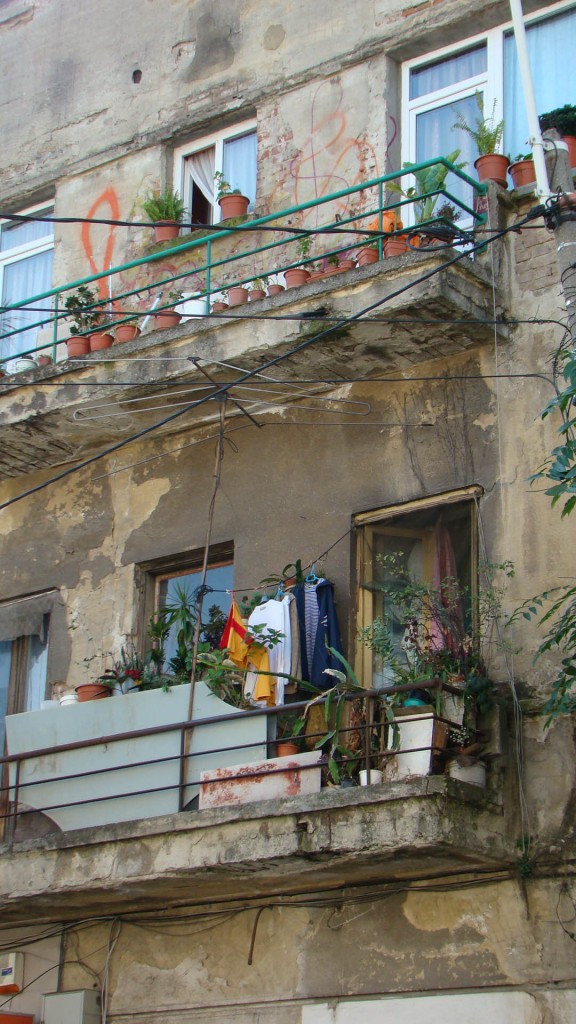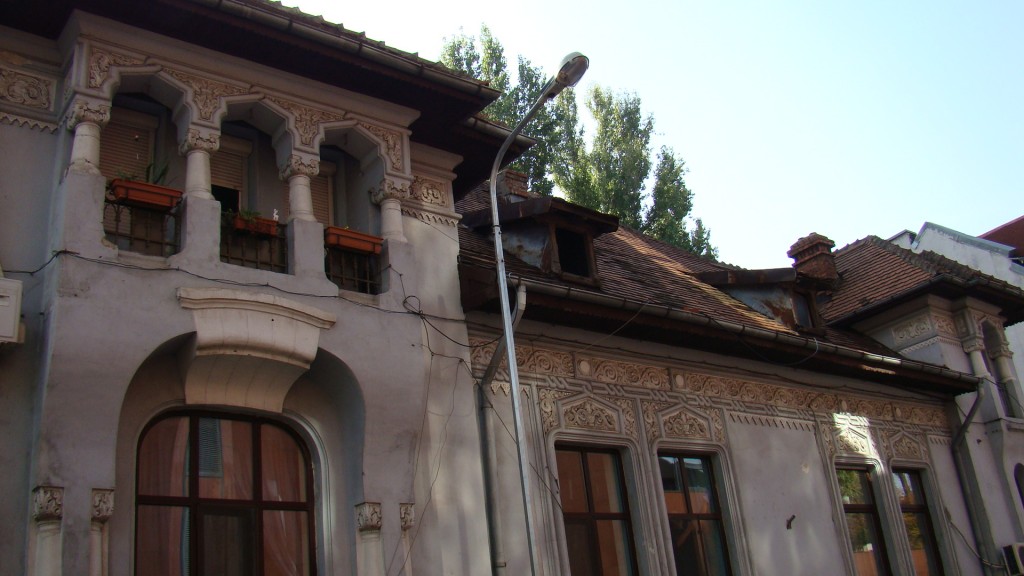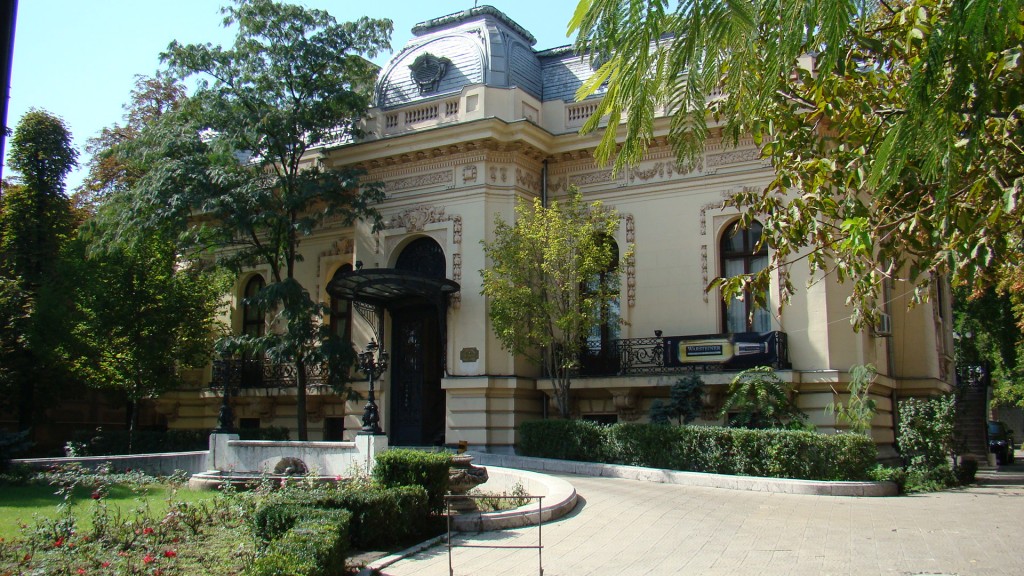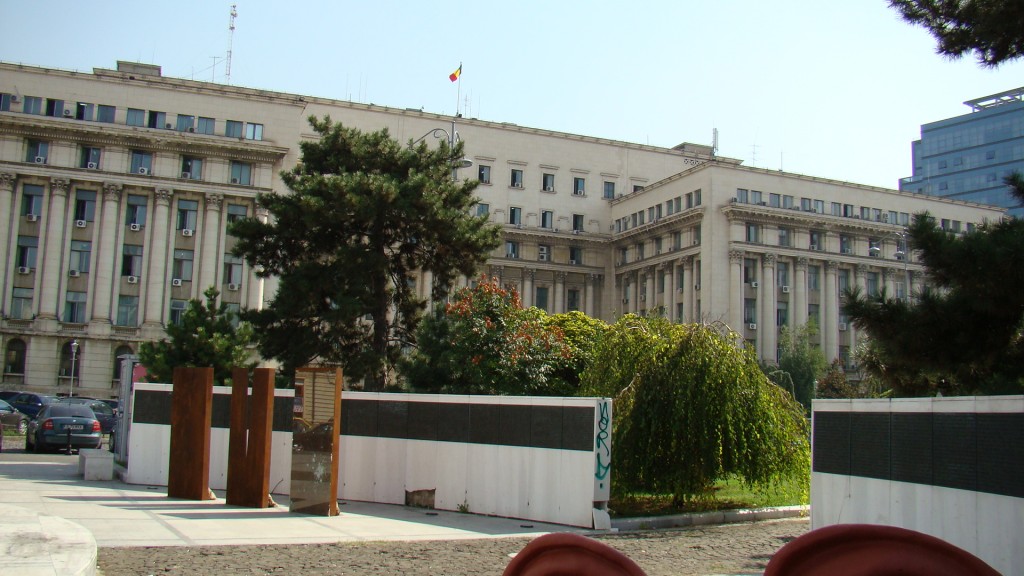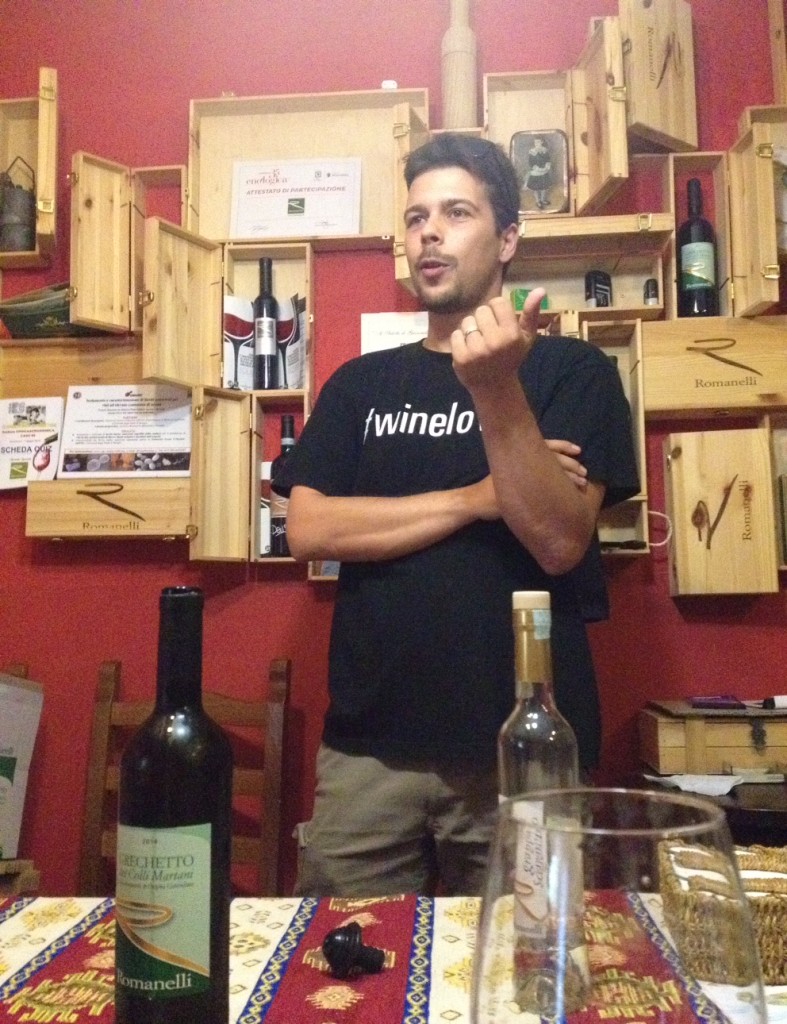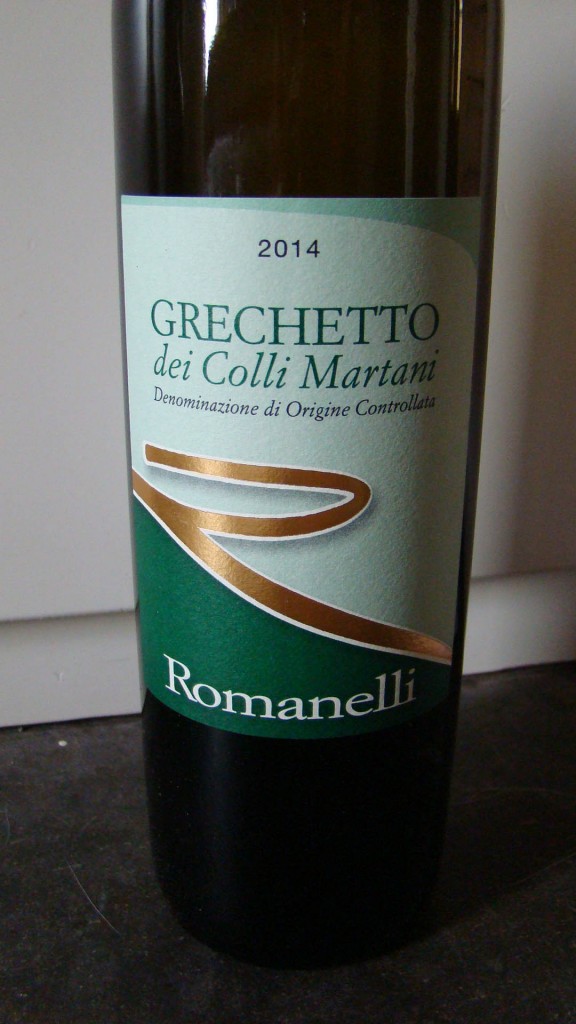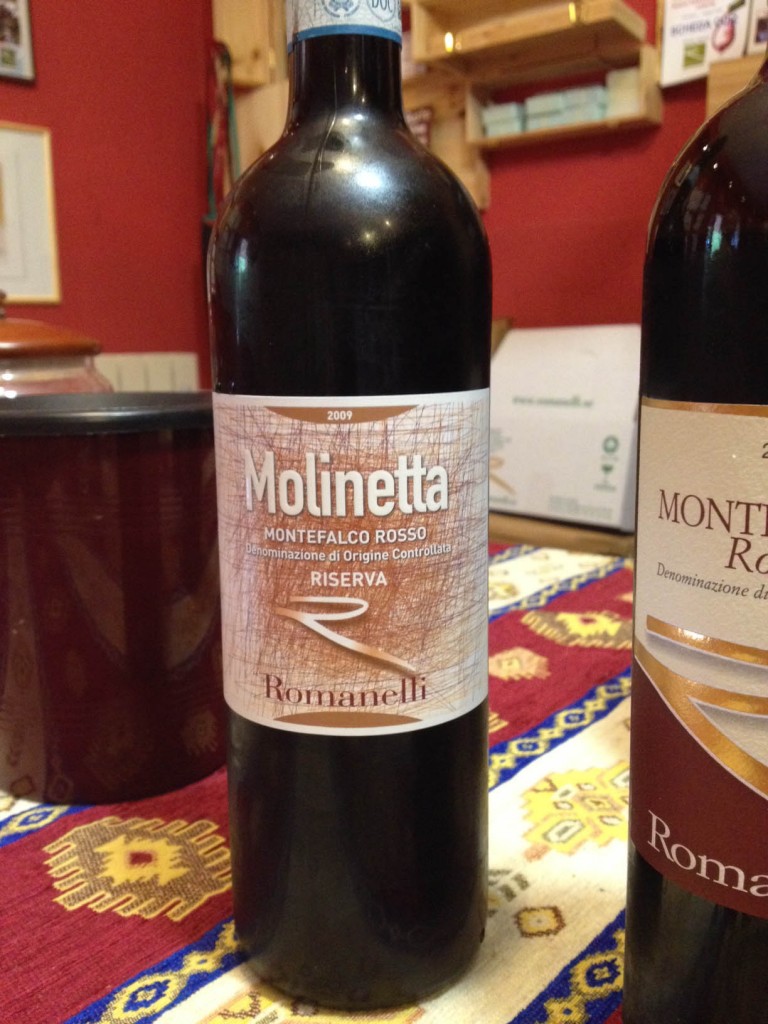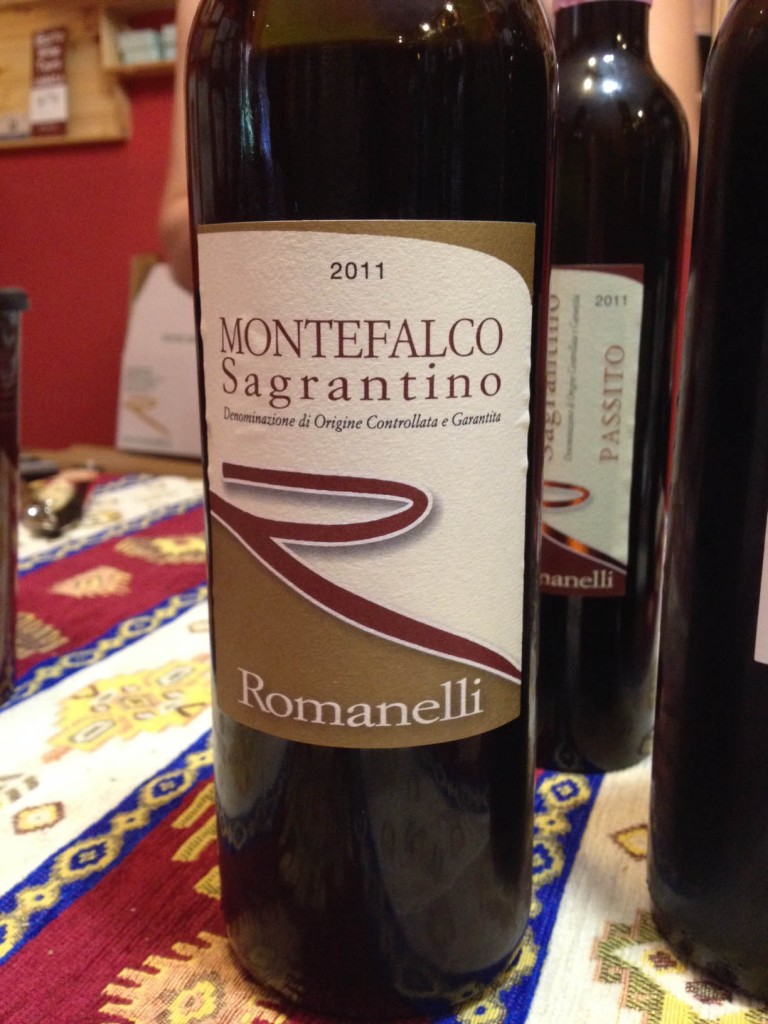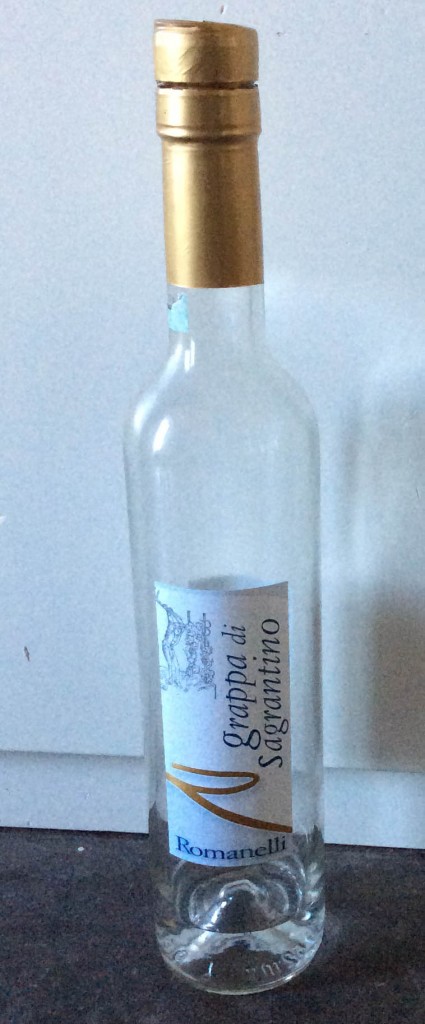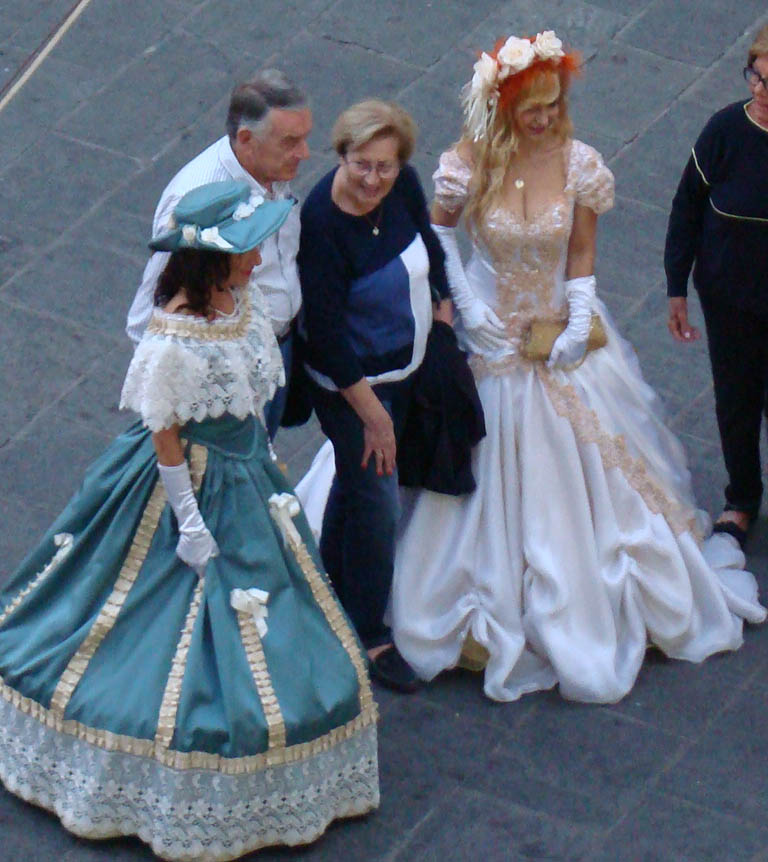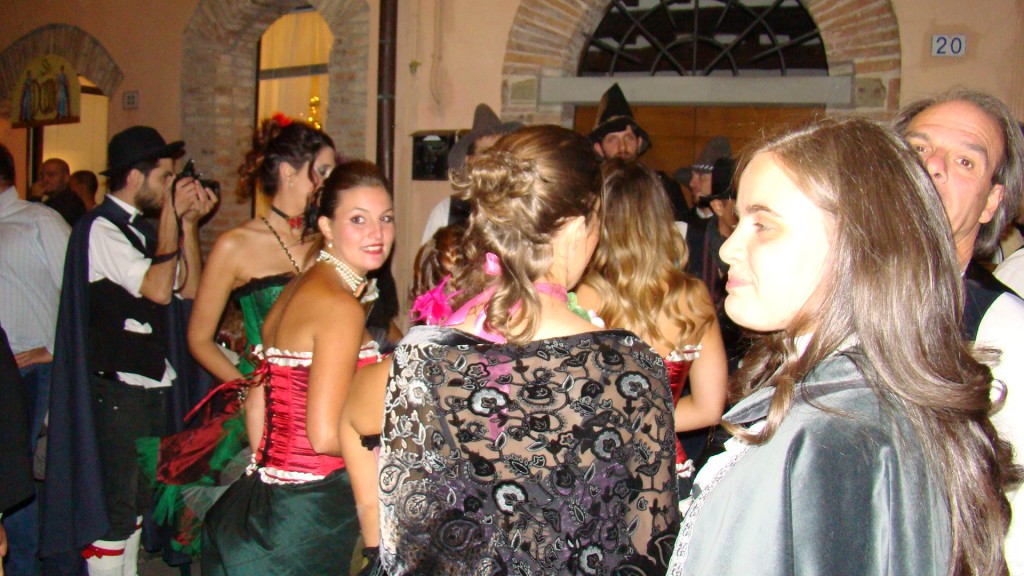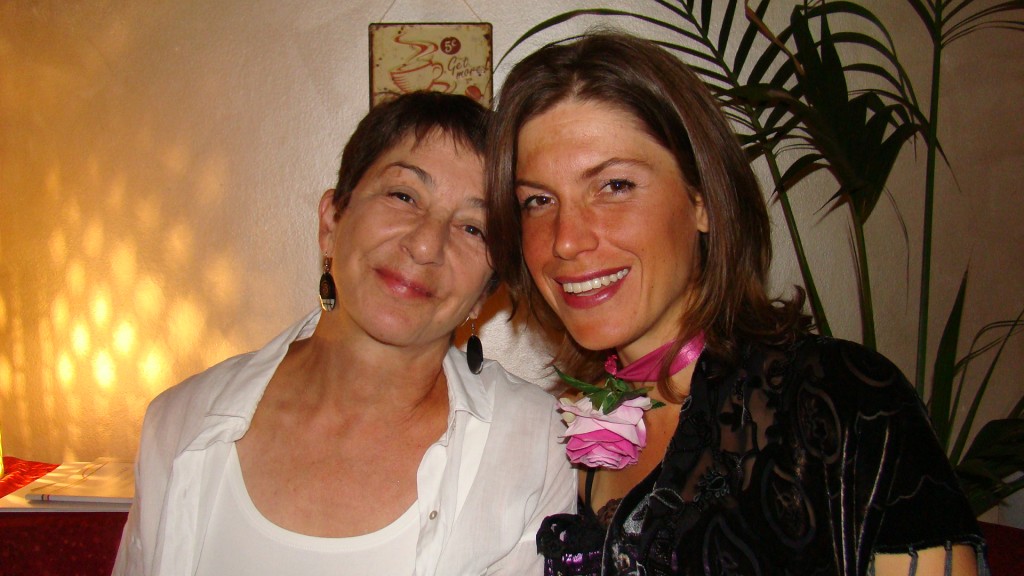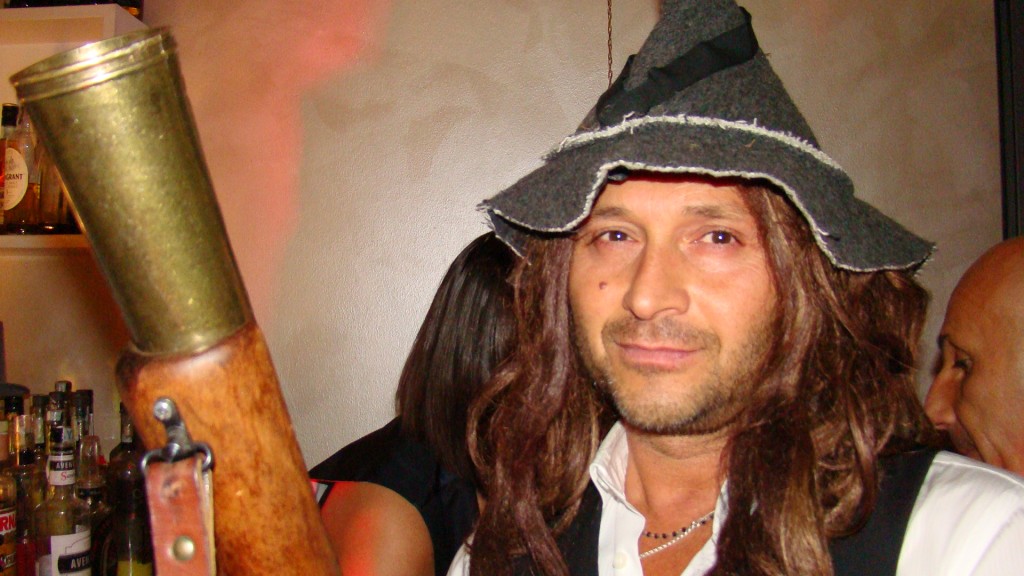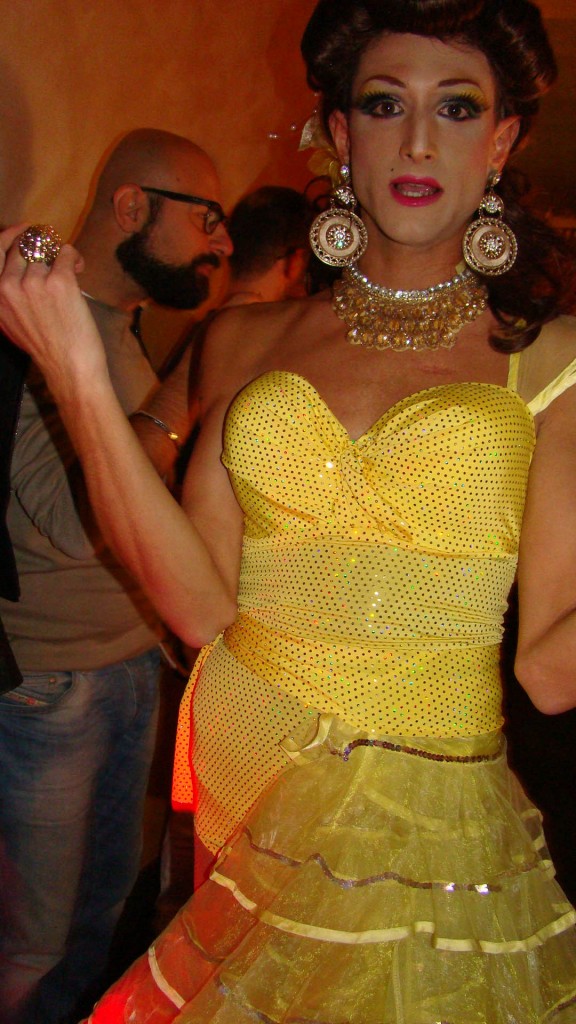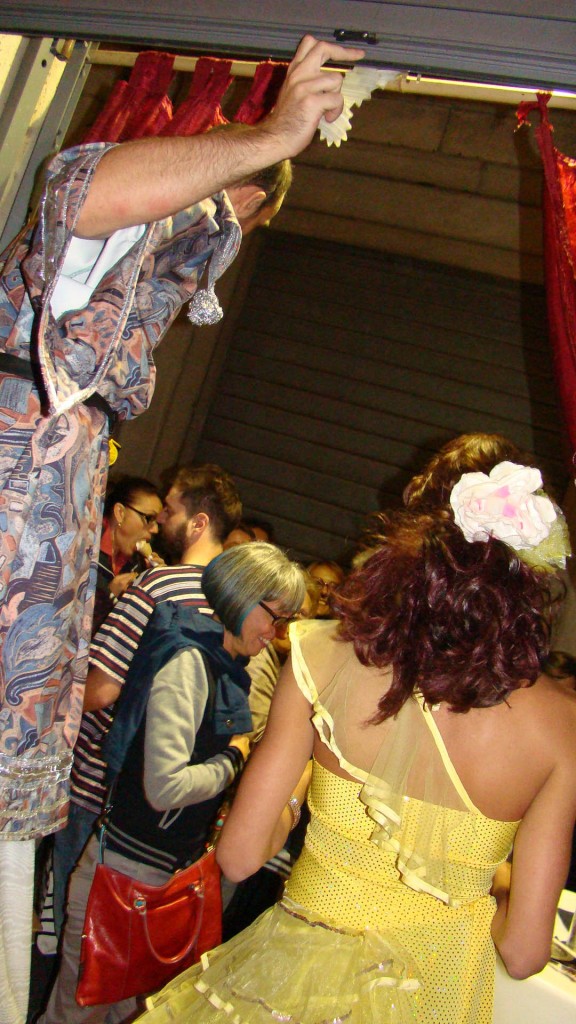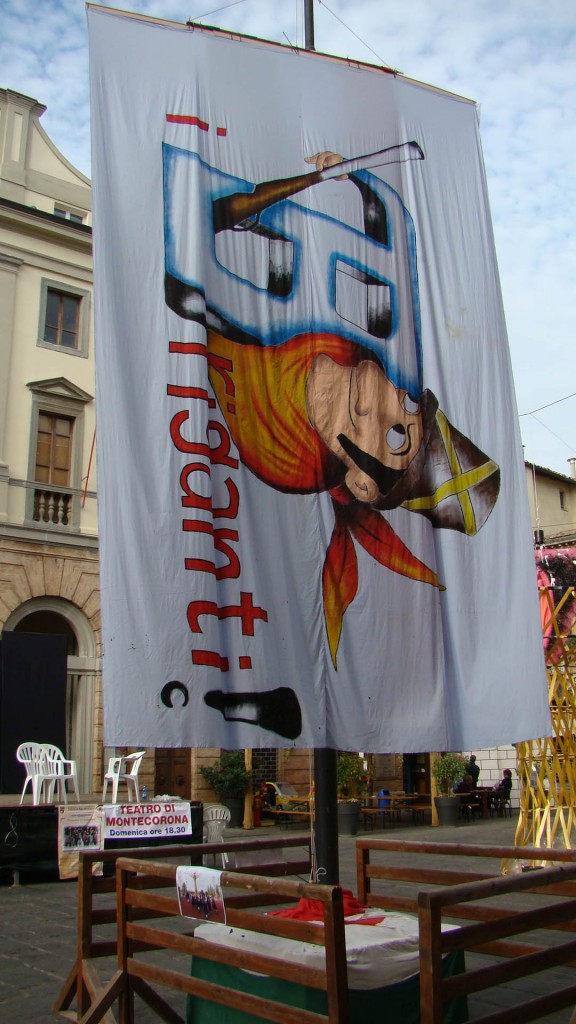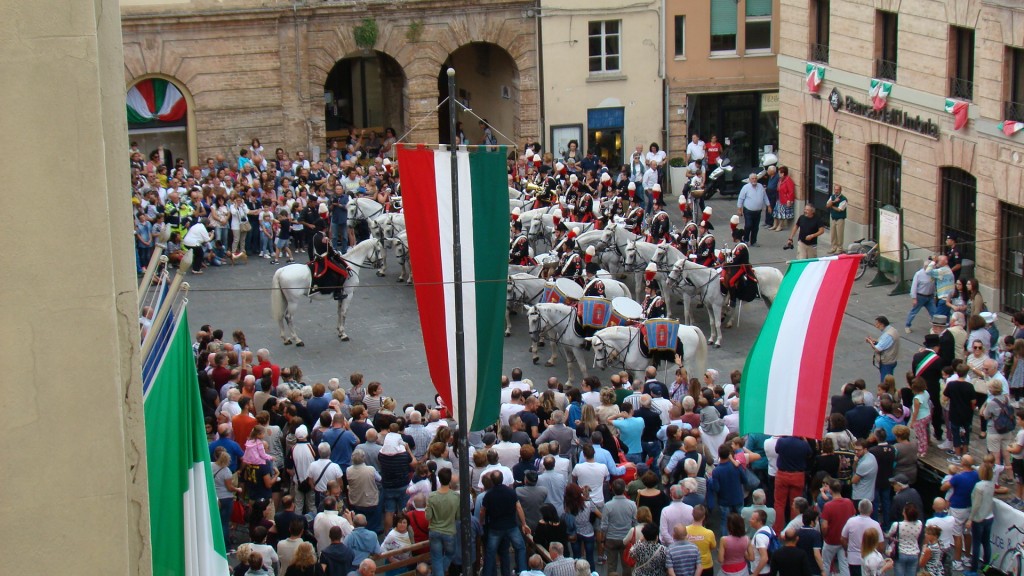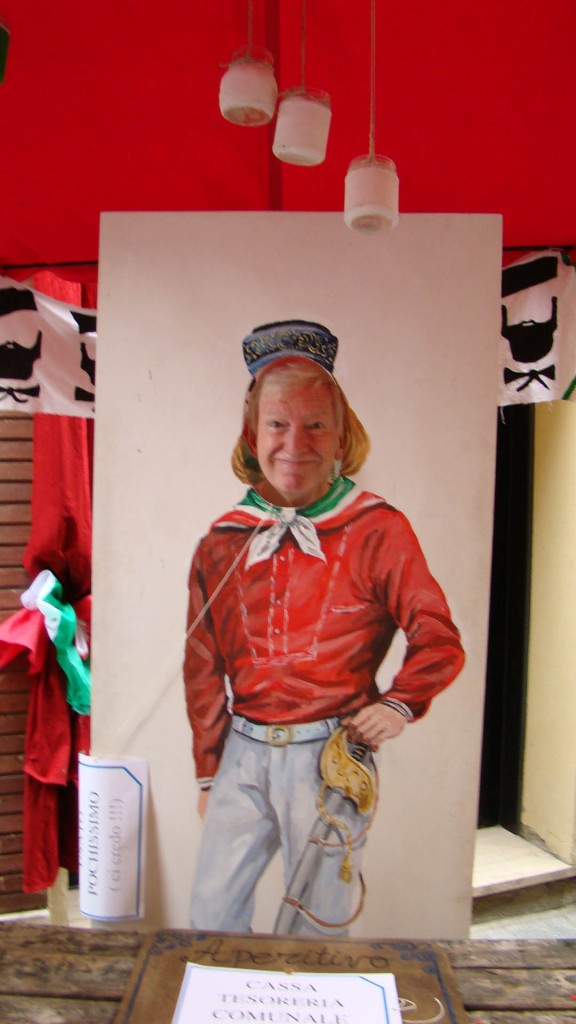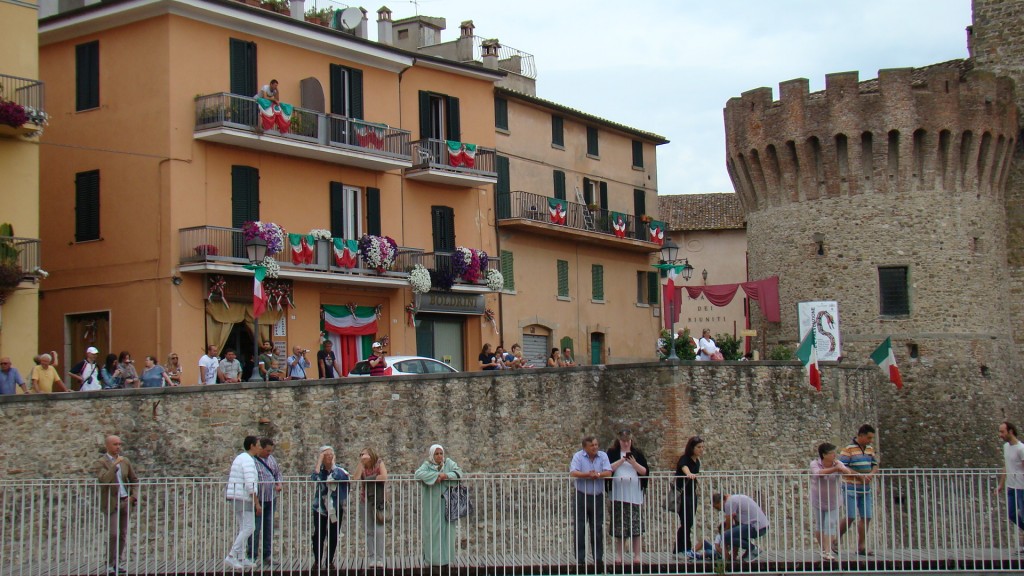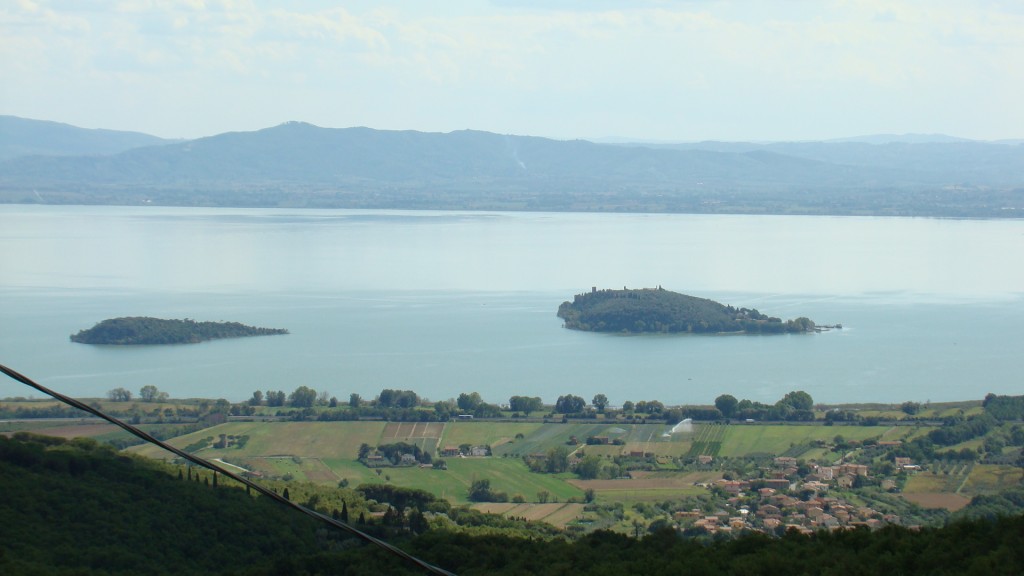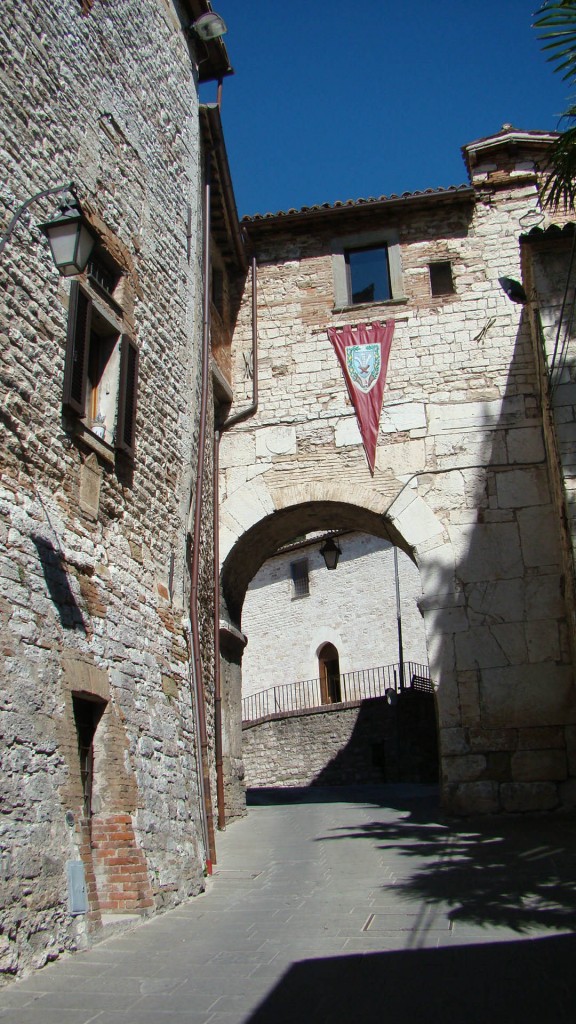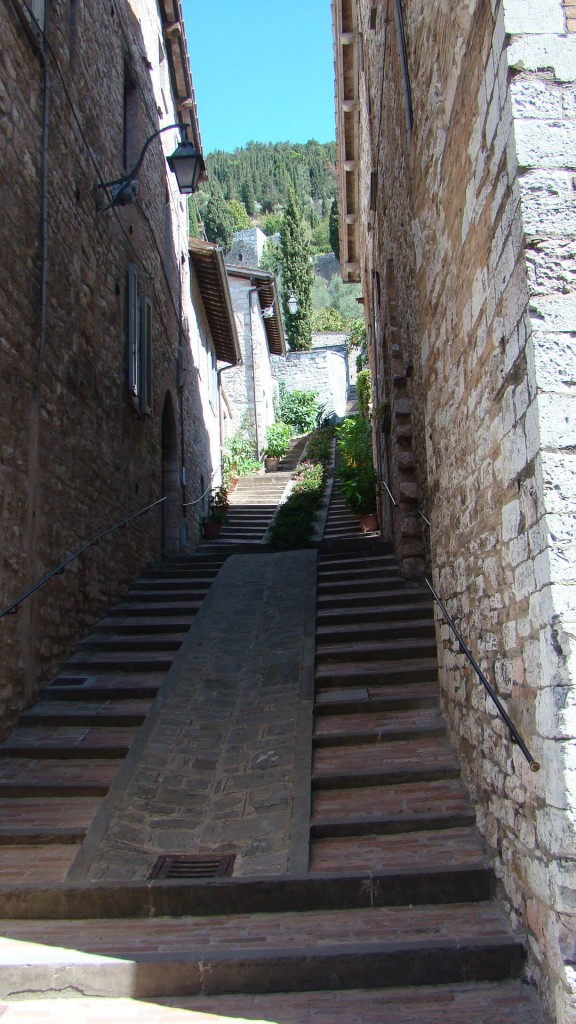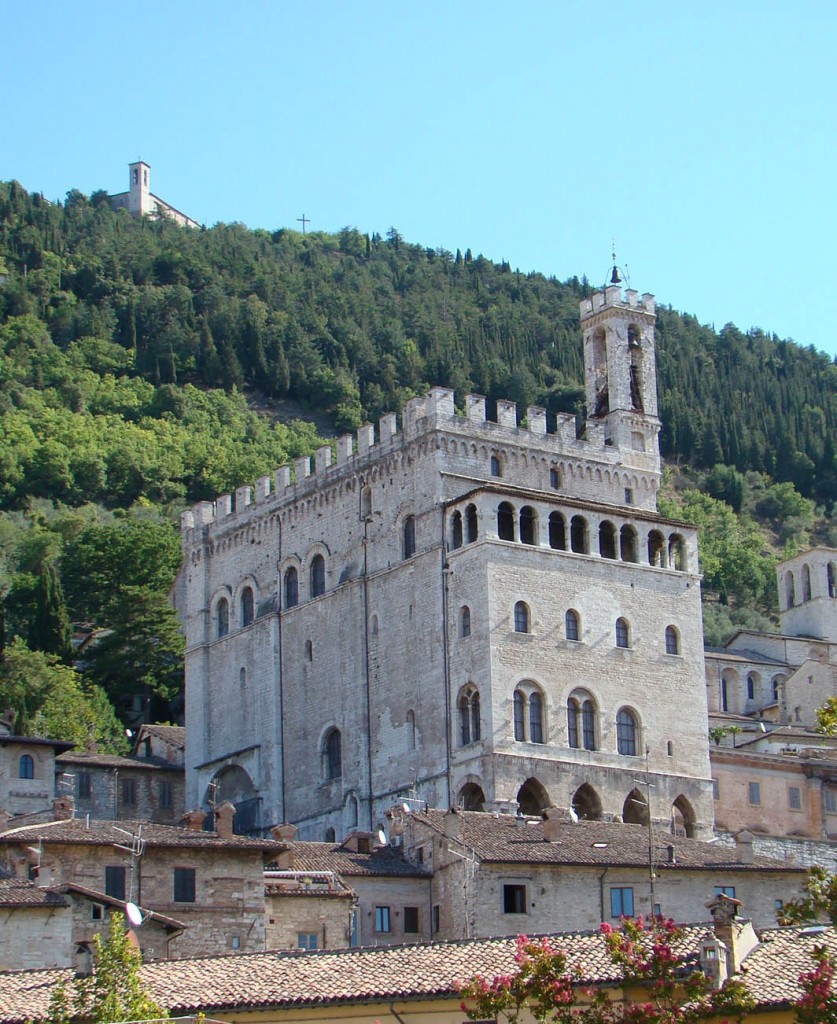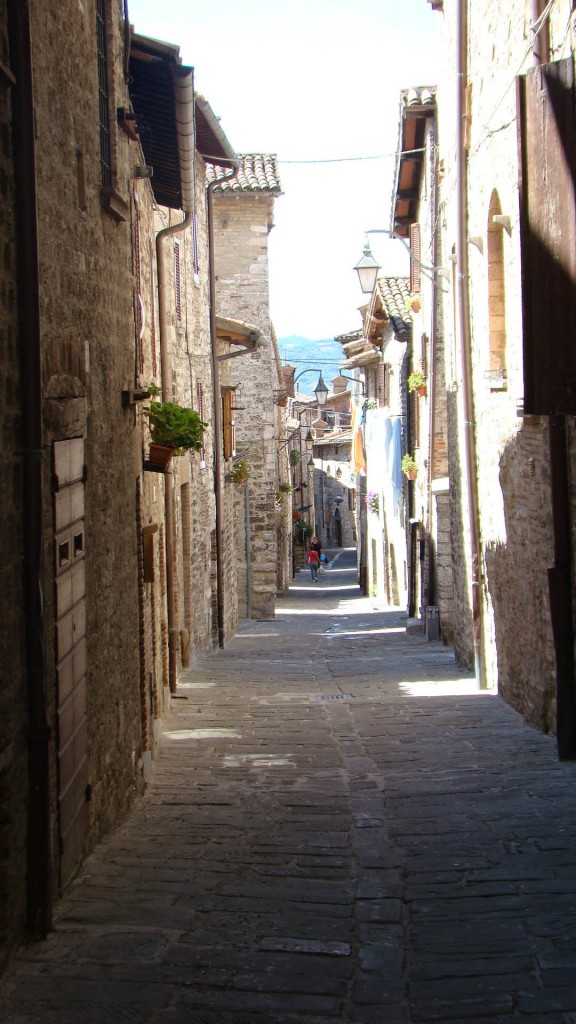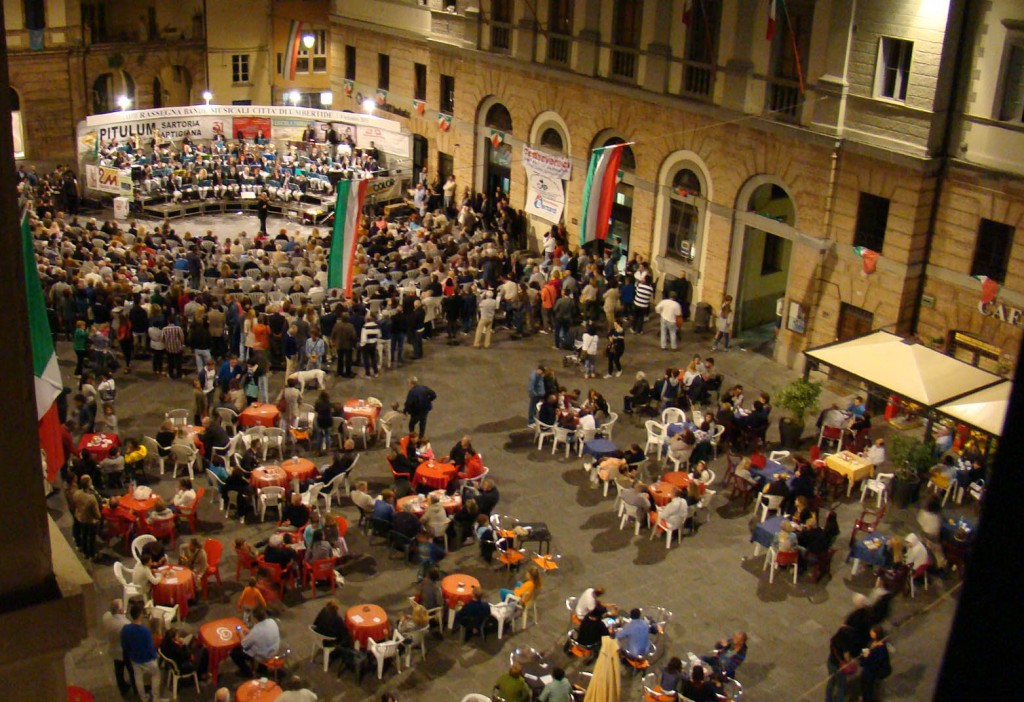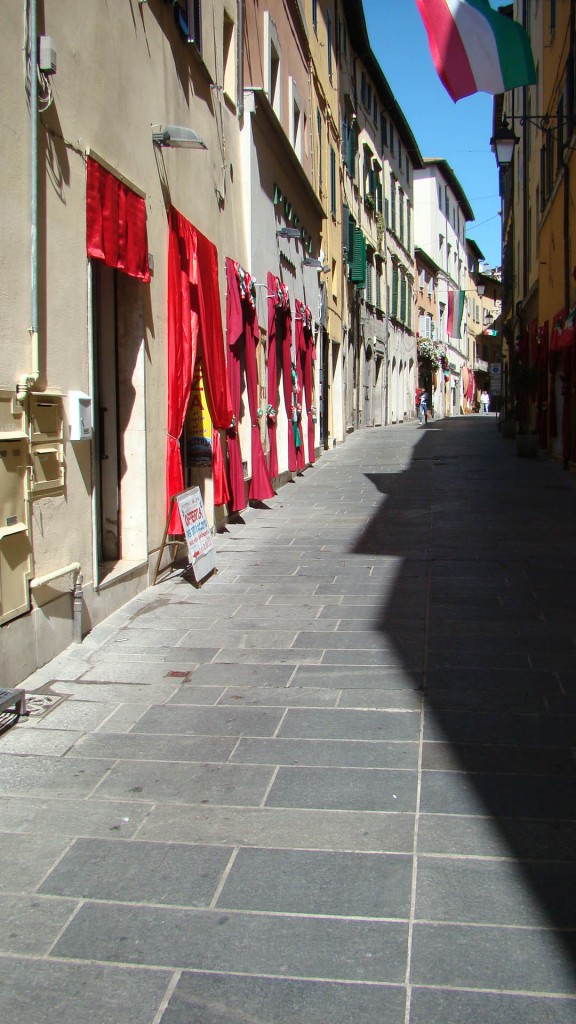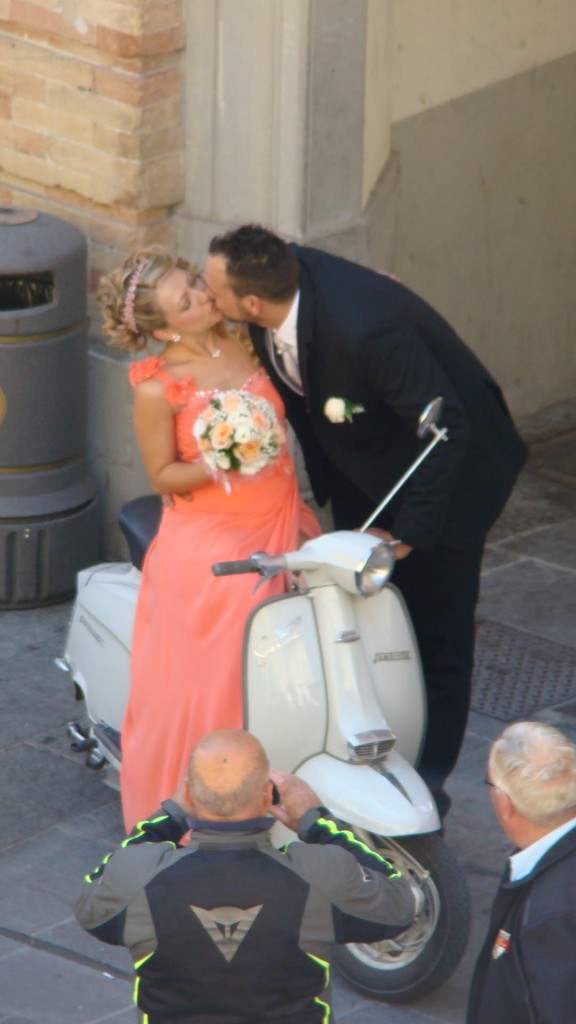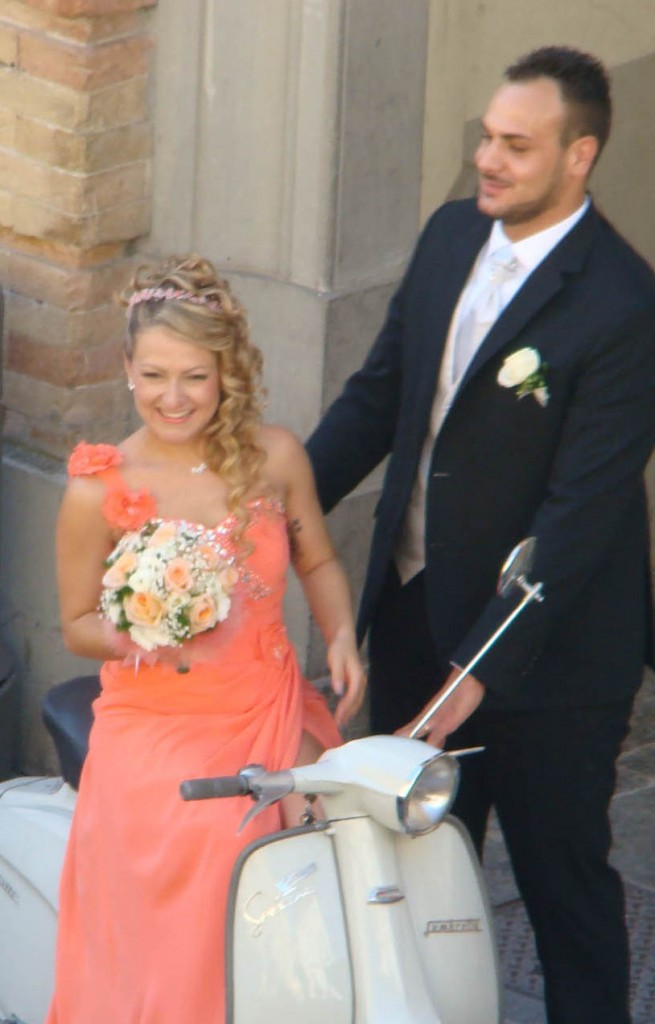Montepulciano was an interesting location, but it’s time to get back to Umbria. Today, we’re going to visit the Romanelli vineyards, which lies 1000 feet up on the Colle San Clemente, one of the northern slopes leading to Montefalco with a lovely view of Assisi and its surrounding hill towns in the distance.
Monte Subasio rising up behind Assisi.

The cantina sits just above the vineyards abutting Montefalco in what appears on approach to be a neighborhood, but quickly turns into rolling fields of grapes and olive trees an you descend from the road into the property itself. For anyone wishing to follow our footsteps, I would recommend an excellent GPS–which we did not have–or good eyesight and luck. The signs to the vineyard are very small and seemingly placed at random. We required a quick trip into Montefalco for directions; fortunately the property is well known and we had no problems after that.
At the Romanelli cantina we were greeted by Devis(!), the Romanelli family member in charge of all matters related to wine. As you might imagine, we were rather struck by the name. It turns out that it was somewhat a fad in Montefalco some thirty years or so ago, and there are, in fact, three other men named Devis in Montefalco. Not bad for a town with 5,800 inhabitants!

Having straightened out the matter of his name, Devis proceeded to give us an overview of the family and its property. The Romanellis have owned the property in Montefalco since 1978, when Davis’s father and grandfather purchased it and split it into olive trees (34 acres) and vines (16 acres). The vineyards themselves are somewhat sheltered from the prevailing winds by the hills themselves and are in a clay soil rich in lime. Today, the property is managed between Devis and Fabio, who handles the olive oil side of the business. Devis is quite the jack of all trades, handling the management of the vineyards, the winemaking tasks and sales.
We started our tasting with a Grechetto 2014. It was striking, exhibiting considerably more body and varietal character than we expected from the workhorse of the Umbrian whites. Its characteristic minerality was well balanced by a lightly floral bouquet and a touch of fruitiness that I found unusual. Given that 2014 was an unusually cool, wet year in Umbria, I was very interested in discussing the wine with Devis. He told me that the sheltered location of the vineyards protected them from the unusually wet weather last year and enabled him to harvest in late September, two to three weeks later than most vineyards bring in grechetto. In addition, the wine underwnt a long, slow fermentation at 15 degrees Centigrade followed by six months in stainless steel tanks. The wine undergoes a further two months of repose after bottling to bring out the maximum from the Grechetto. A hit, this one.

Now it was time for the reds (Romanelli, like most producers around Montefalco, is largely dedicated to red wines). Devis first produced a Montefalco Rosso Riserva 2010. This Rosso, as with any DOCG Montefalco Rosso, is mostly Sangiovese (65%) and Sagrantino (15%), but also includes contributions of Merlot (10%) and Cabernet Sauvignon (10%). As with all his wines, the grapes in this one were harvested relatively late (mid to late October), given 45 days of maceration on the skins and plenty of barrel aging in both small (225 liter) and large (2500 liter) French oak barrels. This produces a monster Montefalco Rosso, by far the biggest I’ve ever tried. The fruitiness of the Sangiovese and the Merlot is exquisitely balanced by the somewhat more austere and tannic Cabernet and Sagrantino. It was very full in the mouth, with cherry notes, with a long, very smooth finish. Devis told me that because he prefers to extensively age his Montefalco Rossos, he produces only a Riserva. Instead of producing a regular Montefalco Rosso, which would require less aging, he prefers to produce a non-oaked wine for everyday drinking, called Predara, Sangiovese (80%) with Sagrantino (12%) and Merlot (8%). It sounds intriguing, but it was all gone. Something for later.

This being Montefalco, the 2010 Sagrantino was rolled out with considerable ceremony including changing the glasses, pouring a small bit of wine in each glass and spinning it in order to coat the inside and a bit of inhaling and sighing (It’s great to see the winemakers doing what they like). The Sagrantino used in this wine is hand-selected from the entire crop, the rest going to the Montefalco Rosso (also hand-selected) and the Predara. As with his other wines, this one received extensive maceration (45-60 days) on the skins to extract the maximum character to the wine, and then spent 18 months in a variety of large and small French oak barrels. After this aging process, the wine spent 10 months in the bottle before being released to the public. This, too, was a blockbuster. Tremendously perfumed, with an earthy, tobacco-like character underneath. The tannins have been tamed and the wine is possessed of a full body and roundness with fruity notes. The finish here was also excellent. I’m sure it could go longer in the bottle, but it’s drinking fabulously now.

We followed the Sagrantino up with its passito version. As you probably remember, passito is the traditional style of winemaking in Montefalco, where the grapes are laid out in a sheltered area and allowed to dry for several months, the wine being produced normally around Easter time after a short stay in oak barrels. The wine is usually made very dry, as was this one, and I can only compare it to a vintage–not a ruby or a tawny–port. It has a strong character of the grape, but almost no sweetness. I find it a bit too subtle, but the Umbrians love it and almost every producer makes one. If you’re interested, you’ll definitely have to come to Umbria to try this one. I don’t think much gets past the Umbrian border.
Devis rounded the tasting out with Romanelli’s 2013 olive oil on slices of toasted bread. Heavenly. The oil was a greenish-gold with a strong hint of straw and a vegetal note that was just right. Although Romanelli is justifiably well known for its wines, it is also a major, prize-winning producer of olive oil. The weather last year was so bad that the entire crop was wiped out. Devis assured us that this year, which has been hot and very dry, the prospects of an successful season are very high. Nancy was very enthused. She has already planned a visit for us in November, when the new oil comes out. Details at that time.
Finally, a short note for my grappa-loving friends. Romanetti makes a Grappa di Sagrantino that is one of the best grappas I have ever tasted. It was unusually smooth with a magnificent finish, completely lacking the sometimes oily character and schnapps-like bite that grappas can have. Grappa production by vineyards was hampered for many years by Italian laws forbidding winemakers to sell distilled spirits, effectively separating the wine business from anything to do with grappa. Those days are fortunately over now, and vineyards such as Romanelli are working hard to produce grappas of an equal quality to the wines they make. Lucky for us!
Almost all gone…


